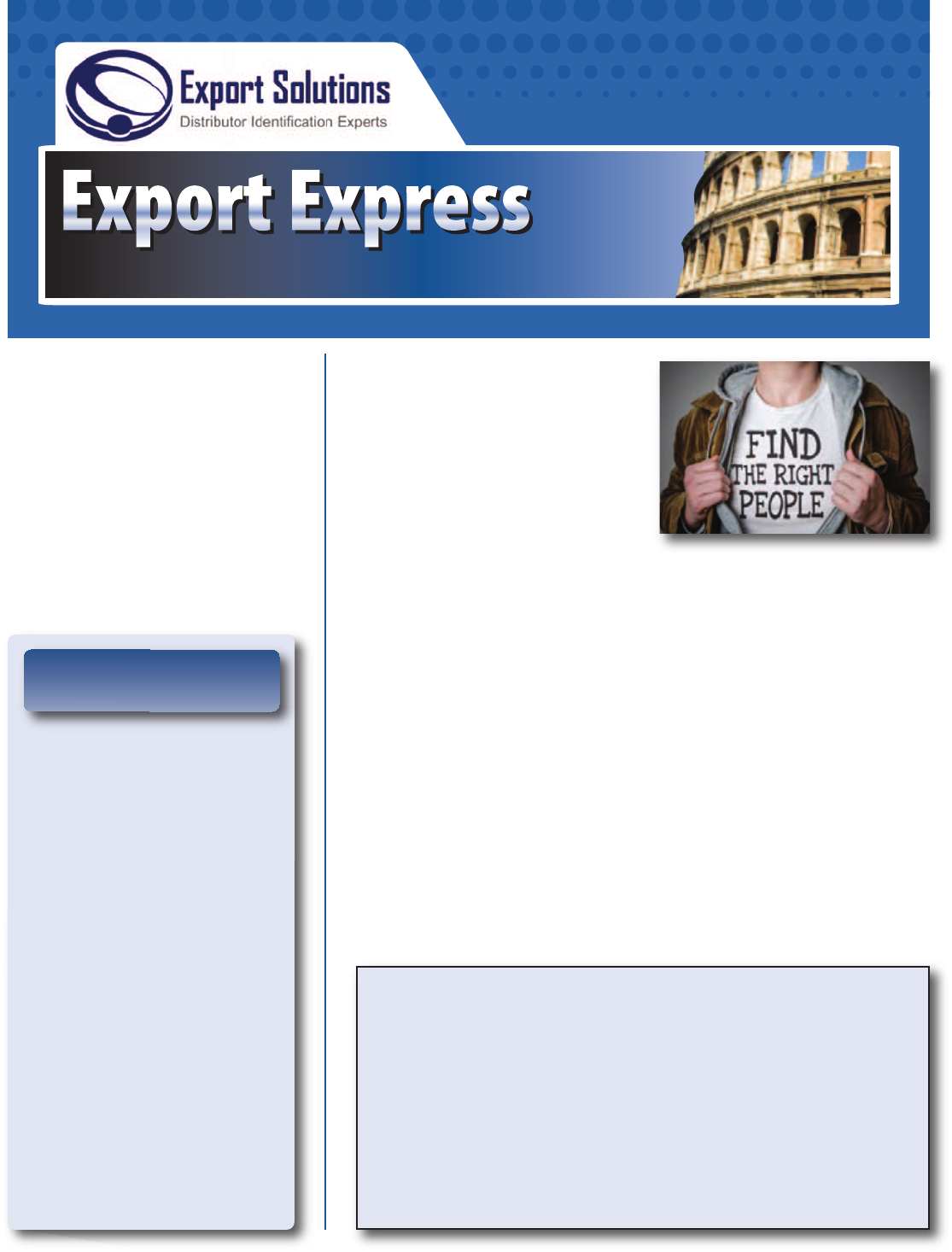
Insights to Accelerate International Expansion
Trade Show Planning Guide
Our Mission: Help Manufacturers “Spend time Selling to Distributors versus Searching for Distributors”
I love trade shows! Where else can you
host crowds of overseas distributors
interested in speaking about your brand?
International exhibitions represent an
efficient approach to meet existing
partners, evaluate new distributors,
launch new products, check out the
competition, and network. The challenge
is to “find the right people” who are
serious brand builders, not pretenders.
Scheduled meetings with pre-screened
distributor candidates are a proven
success strategy.
Big Investment
Brand owner participation at global
trade shows like SIAL or ISM represents
a significant commitment. There is the
financial investment in booth space plus
travel and entertainment. A greater cost
is associated with investment in the
team’s time. Normally, it takes one week
to get ready for a major show, another
week for the show and as much as two
weeks for follow ups. Some companies
roll the dice and elect to make a big
splash at only one trade show per year.
Under any scenario, there is significant
pressure from senior management to
make trade show investment pay
out in the form of profitable new
business relationships.
Make “Hope and Pray” Go Away
Many exhibitors create a beautiful booth,
and then “hope and pray” that a strong
distributor from a target country passes
by. Export Solutions’ Trade Show
Planning Guide is a resource to help you
maximize productivity from your
international trade show participation.
This guide is packed with insights,
templates, and best practices to help you
“find the right people” to build your
export sales. Export Solutions’
distributor database is an “accelerator,”
supplying information on 9,200
distributors in 96 countries. “Spend time
selling to distributors versus searching
for distributors.”
Greg’s Guidance: Trade Show Tips
3 New Expansion Countries: invite qualified distributors
to scheduled meetings
3 Distributors Wanted: post sign listing key expansion countries
3 Distributor Data Sheet for all visitors to complete
3 Company Credentials Brochure, export manager contacts on back
3 Find the Right People: Select your distributors, do not let your
distributors select you
In This Issue
Sell to 96 Countries
Looking for qualified international
distributors? Export Solutions’ leading
distributor database supplies information
on more than 9,200 distributors in 96
countries. The database features filters
that allows you to screen distributors by
categories such as Confectionery, Natural
Food, Beverage, or Made in the USA (or
Italy, UK, or Germany). New! Export
Solutions’ retailer database now tracks
2,700 retailers in 96 countries. Free
samples at www.exportsolutions.com.
Page 2
Ten Tips –
Maximizing Trade Show Productivity
Page 6-7
Select Your Distributors, Do Not Let
Your Distributors Select You!
Page 14
10 Questions for Every
Distributor Interview
Page 23
What is the Plan?
Page 28
Export Trade Promotion Funding
Page 33
Pioneering: A Gamble, Not
a Guaranteed Gold Mine
Find the Right People
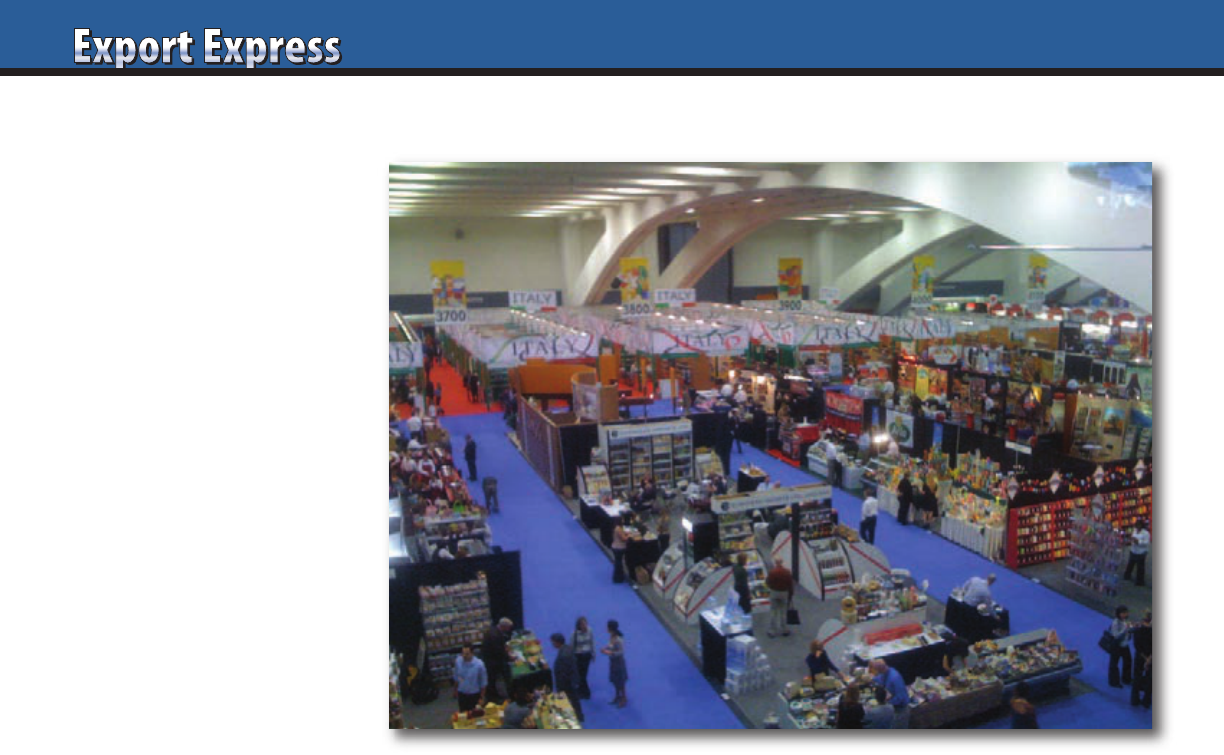
2
Everyone loves a trade show.
Where else can you rent a booth
and witness lines of customers
and distributors waiting to see
you to talk about your brands?
Trade shows represent sizable
investments and valuable booth
time can be wasted with non-
productive meetings.
Read our Ten Tips to maximize
your trade show productivity.
1. Create Sign:
Distributors/Customers Wanted
List countries where you are
searching for a distributor or
retailer partner. This serves as
an invitation to distributors from
those countries to stop by. This
strategy also acts as a deterrent
to discourage distributors from
visiting from countries where
you already have a partner or
maintain limited interest.
2. Use Export Solutions Database
to Pre-Screen Distributors
Over 3,000 companies have used our proprietary database to
find qualified distributors. Quickly. A common technique is
for distributors to list the countries where they hope to expand
one month in advance of a major trade show. They then use the
Export Solutions’ database to pre-screen candidates and identify
the five candidates per country with the highest potential.
Then, they email these distributors in advance of the trade fair
to request a meeting. This approach works better than sitting
at your booth with a “hope and wait” strategy to meet
qualified distributors.
3. Create a Template to Recap Capabilities of Potential Distributors
Request that prospective distributors complete the template
in advance of a meeting. Think of the template as a distributor
CV or resume. How long has the distributor candidate been in
business, sales, employees, key brands, length of service for key
brands, and most importantly references from other brand
owners and in country retailers.
4. Prepare a One Page Recap of your Company Credentials
This should include product “beauty shot,” current export
countries, and unique product characteristics. List export
manager contacts and a photo on the back with a space for
notes. Professionally print this on a one glossy page handout.
This will serve as an important reminder for the meeting when
the retailer or distributor returns home with hundreds of
business cards.
5. Participate in Show Sponsored Matchmaking Events
Most trade fairs organize matchmaking events. The formats can
vary, but basically they can arrange meetings with interested
buyers or distributors. As always there is a mix of good meetings
and bad, but the approach is worth consideration.
6. Take Photos of Potential Distributor Candidates
First take a picture of the distributors business card. Then take
a photo of the potential new distributor. After hundreds of short
meetings, this will help you remember the candidate once you
begin serious due diligence after the trade show.
7. Bring at least 500 Business Cards
I am serious. We have all run out of cards at a trade show. Better
yet, bring 1000 business cards.
8. Schedule a Group Event for Current Distributors
This event is an efficient way to launch a new product or
announce “Distributor of the Year.” You must schedule the
event before or after show opening times. Best bet is a breakfast
or a dinner, if you schedule it four months in advance to avoid
conflicts with other events.
9. Get to the Show Early and Leave Late
As a trade show visitor, it is normally much easier to reach senior
decision makers of a supplier before 10:00 am or after 4:00 pm.
They are often less distracted and have more time to spend with
you. Similarly, Brand Owners are always more accessible on
Sunday of a trade show or the last day. Normally, the retail
buyers don’t attend trade shows on the weekends or “last day”
of the trade show.
10. Create a Trade Show Exhibit Planner
Trade Shows post a listing of all exhibitors on their web site in
advance of the show. Many also have a routing software that will
allow you to add exhibitors of interest to your private list and plot
a route based upon your selected exhibitors. Exhibitors that
maximize trade shows schedule most of their meetings in advance.
Ten Tips – Maximizing Trade Show Productivity
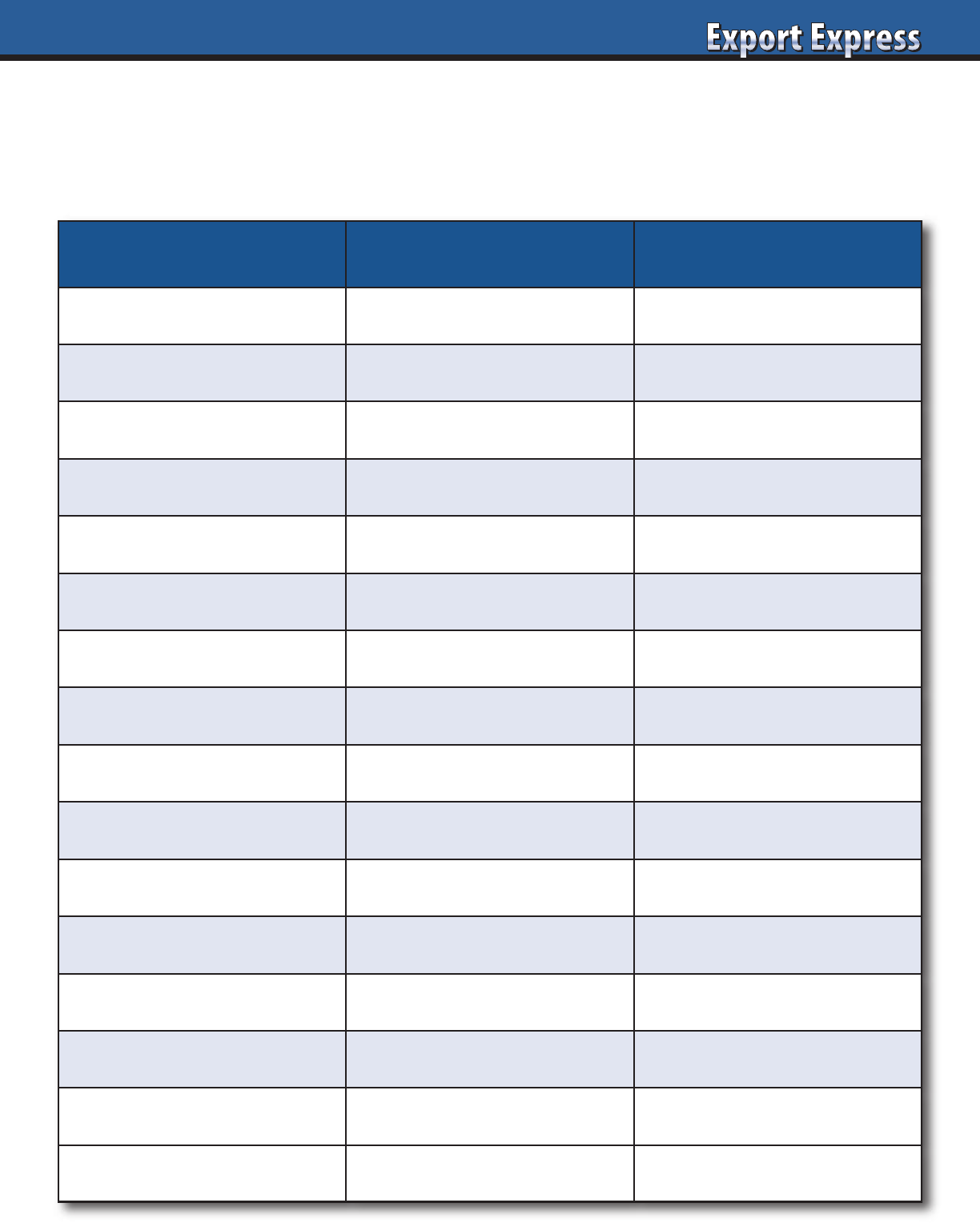
3
Are Distributors Interested in Your Brand?
High Interest Low Interest
Email Response
Immediate reply Delayed or no reply
CEO Engagement
Active participation Delegated to middle management
Scheduling Meeting
Flexible and easy Difficult. Conflicts.
Airport/Hotel Pick-Up
Offers to pick you up Take a taxi!
Meeting Presentation
Tailored. Prepared for you. Standard presentation
Category Research
Obtains data None
Competitive Review
Shares photos: store sets Informal comments
Store Visits
Organized/led by CEO Office meeting only
Samples
Obtains and tries samples Waits for you
Team Participation
3-6 people at meeting One person
Cell Phone
Shares private number Email address only
Questions
Addresses key issues No questions
Timeline
Meets due dates Delays
Post Meeting Follow-up
Immediate and frequent None
Proposed Plan
Detailed and fact based Brief topline
Results Winner Second place?
I have conducted hundreds of distributor interviews for multinational companies: P&G, Nestle, General Mills, Duracell, Lindt, Tabasco,
Barilla, J&J, etc. Distributor candidates all claim enthusiasm and high interest in your brand. See Export Solutions’ checklist of clues to
measure true distributor interest level.
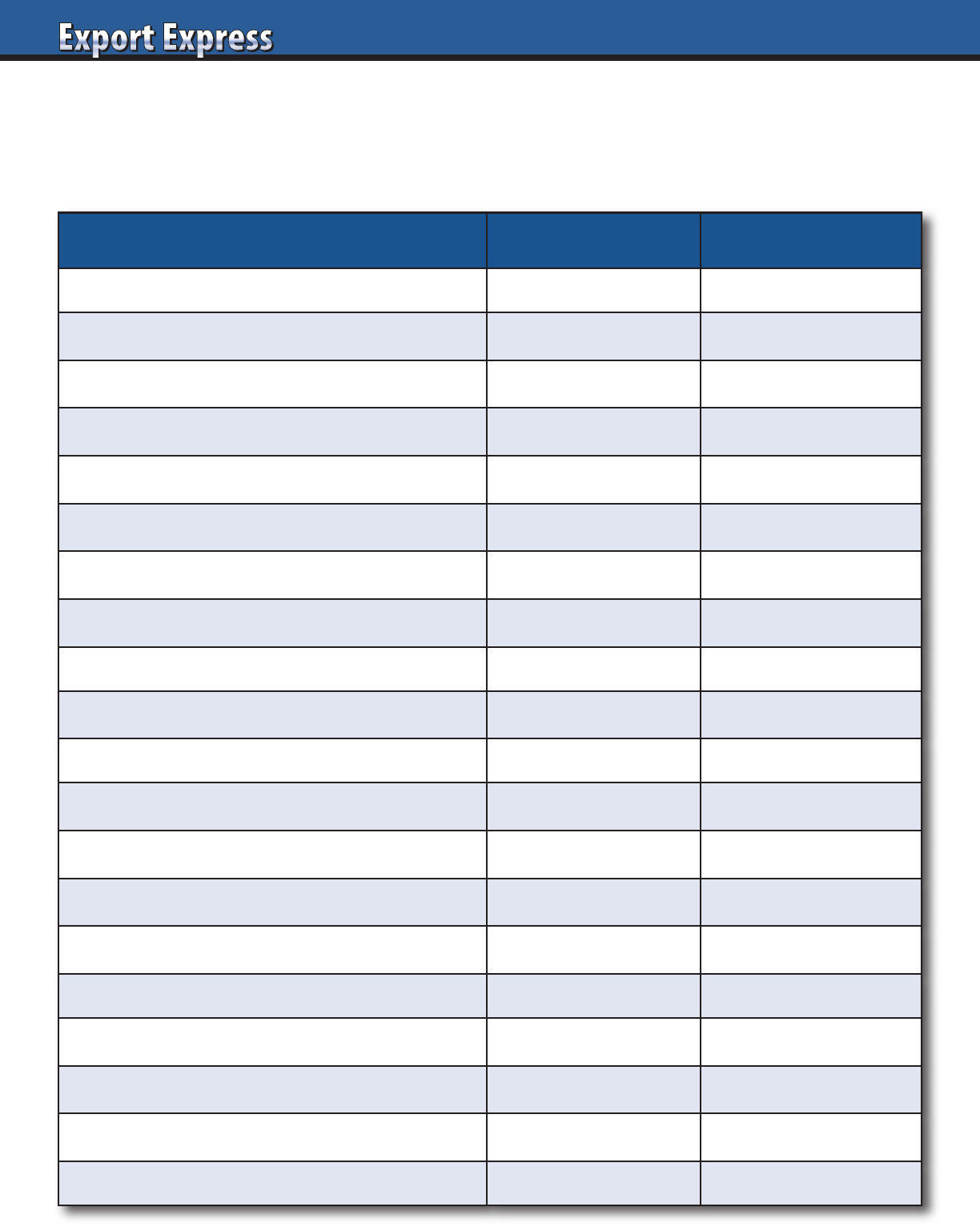
4
What Distributors Want to Know ?
Strong distributors are overwhelmed by calls from brand owners looking for new partners. Distributors assess
each opportunity carefully, as any new brand must add incremental sales and profits and not distract from
priorities from existing brands handled. What is the “size of the prize” for the distributor?
Assessment Criteria Facts Rating (10 = Best)
Your company: size/reputation
Existing business: sales in distributors country?
If zero “current sales,” what is realistic expectation?
Brand’s USP…your point of difference/innovation?
Size of investment plan: Marketing and Trade?
Potential distributor revenues?margin?
How does the product taste? (or peform)
How attractive/compliant is the packaging?
Pricing relative to category?
Brand success story in an adjacent country?
Competition intensity in category?
Brand range complexity?Product shelf life?
Local market research? Syndicated data?
Will brand invest in marketing and social media?
Will this be a tough product to launch?
Can we grow with the brand owner?
Your brand: core distributor category or adjacency?
Will the export manager be good to work with?
Will we be proud/excited to represent this brand?
What is the “size of the prize?”
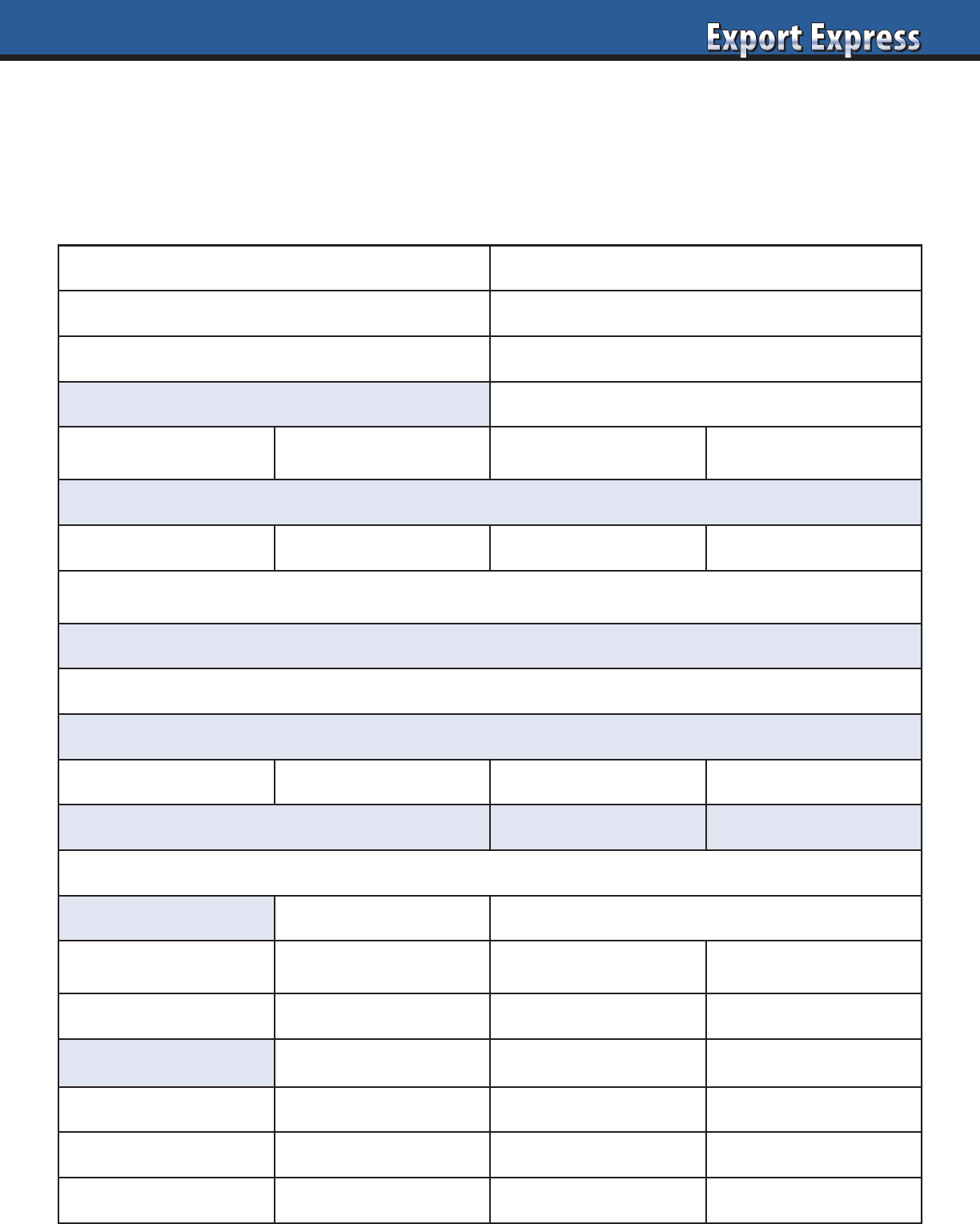
5
Exporter Data Sheet
What Distributors want to Know about Your Company
New Business Opportunity: _____________________________________
(Company Name/Country)
Key Contact: Telephone:
Web Site: Email:
Founding Date: Ownership:
Annual Sales: Total Employees:
0-$50 million $50 million - $250 million $250 million- $1 billion $1 billion +
% Sales International:
0-10% 10-25% 26-50% 50% +
Exporter Classification/Description:_________________________ (#1-10, based upon Export Solutions’ scale)
Core Product Range:
Unique Selling Point:
Market Share:
Home Country: Country A: Country B: Country C:
Current Business in Distributor’s Country: Yes/No: Size $:
Current Customers (Distributor’s Country):
Investment Model: Listing Fees*: Yes/No *average $35 per item,per store
Trade Promotion Budget: Dead net price: 10% of sales: Mass:
Marketing: Digital: Sampling: 360 degree:
Ambition/Size of Prize: Sales: Market Share:
Year 1
Year 2
Year 3
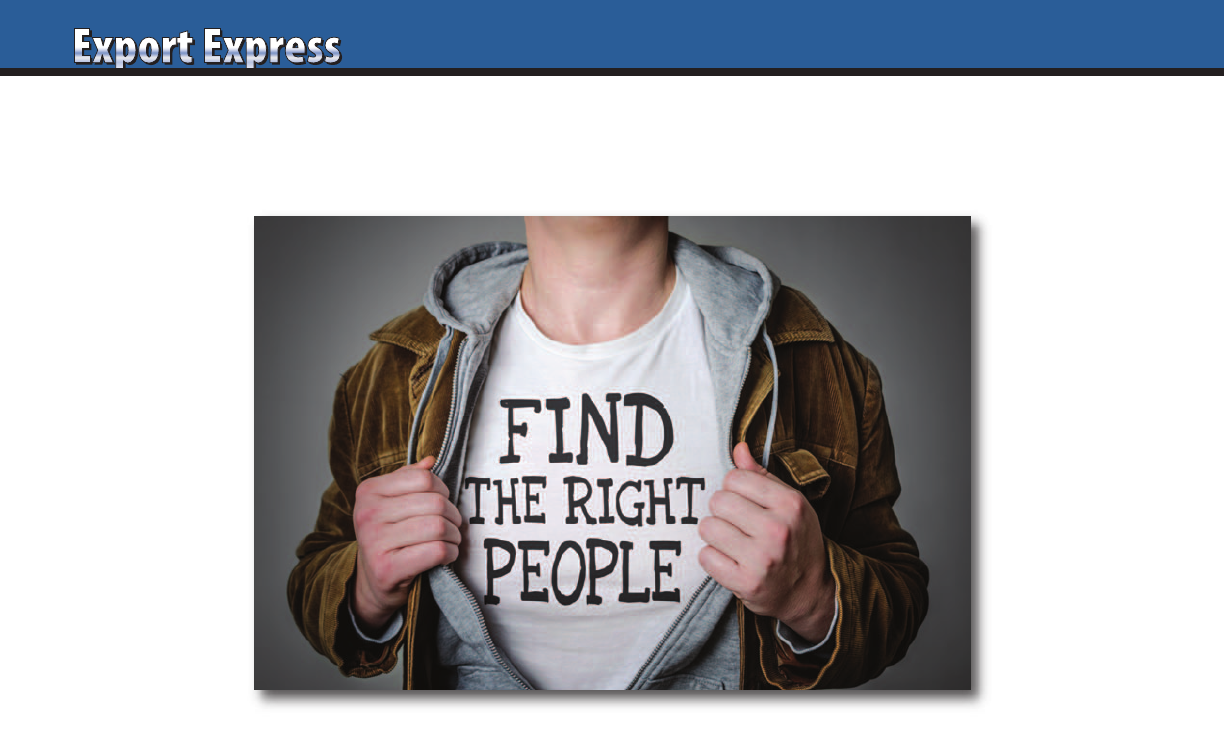
6
Identifying strong distributors is a critical step in developing
your export business. There is a “science” to partner selection.
In some cases, manufacturers choose the easy way out, electing
to work with small, undercapitalized companies that approach
them randomly at a trade show or via email. Many company’s
distributor networks contain these small, enthusiastic
distributors who aggressively pursued your popular brand, but
rarely deliver. Give them an “A” for effort, but distributor search
must include proper due diligence of all potential candidates,
not just the small one chasing you.
Do you believe that the best distributors are waiting in line
at trade shows or speed dialing export managers? The most
powerful distributors are busy building brands for their existing
partners. However, all distributors are open to representation of
new suppliers. In fact, many of the more strategic distributors
assign a brand manager to new business development. This
senior person is dedicated to evaluating new company
representation inquiries like yours.
Export Solutions ten step distributor search process is a proven
method for identifying and selecting distributors that are the
right fit for your brand’s marketplace ambitions. Listed below
are some practical tips on selecting the right company to
optimize your business in a new country.
Establish Partner Selection Criteria
What are the key attributes of your most successful distributors?
Category specialization? Multichannel coverage? Synergy with
related brands? Choosing a large, “best in class” partner versus
a “small, hungry” company willing to pioneer a new brand is
an important preference.
Evaluate Multiple Candidates
Create a large group of potential candidates. This could include
distributors or local producers of related products. Include
qualified candidates that have emailed or visited at a trade fair.
Highlight companies that are specialists in the market sector that
you are aiming at. Export Solutions streamlines this process with
our leading distributor database containing an average of 85
distributors per country.
What is Your Story?
Manufacturers need to supply a compelling story on why the
distributor needs to invest his money and team resources into
your brand. Distributors search for companies with innovative
products back by marketing support. How much money can
the distributor make representing your brand?
Determine Candidates’ Preliminary Interest Level
Send a brief summary of your product proposition and company
credentials to the 5-10 most promising candidates. A follow-up
phone call to your top candidates is an essential personal
connection. Distributors expressing an interest should complete
a brief company overview recapping their corporate capabilities:
annual sales, organizational model, coverage, key principals, etc.
Interview 3-5 Candidates
Normally, we recommend interviewing at least three candidates
depending on the size and complexity of a country. Schedule the
meeting 4-6 weeks in advance. Provide a specific agenda at least
three weeks in advance, including pre-work such as category
market analysis. Meet the distributor’s team that would work
on your business, as well as senior management. Always meet
at the distributor’s office for clues on company culture, scale,
and capabilities.
Select Your Distributors,
Do Not Let Your Distributors Select You!
continued on next page
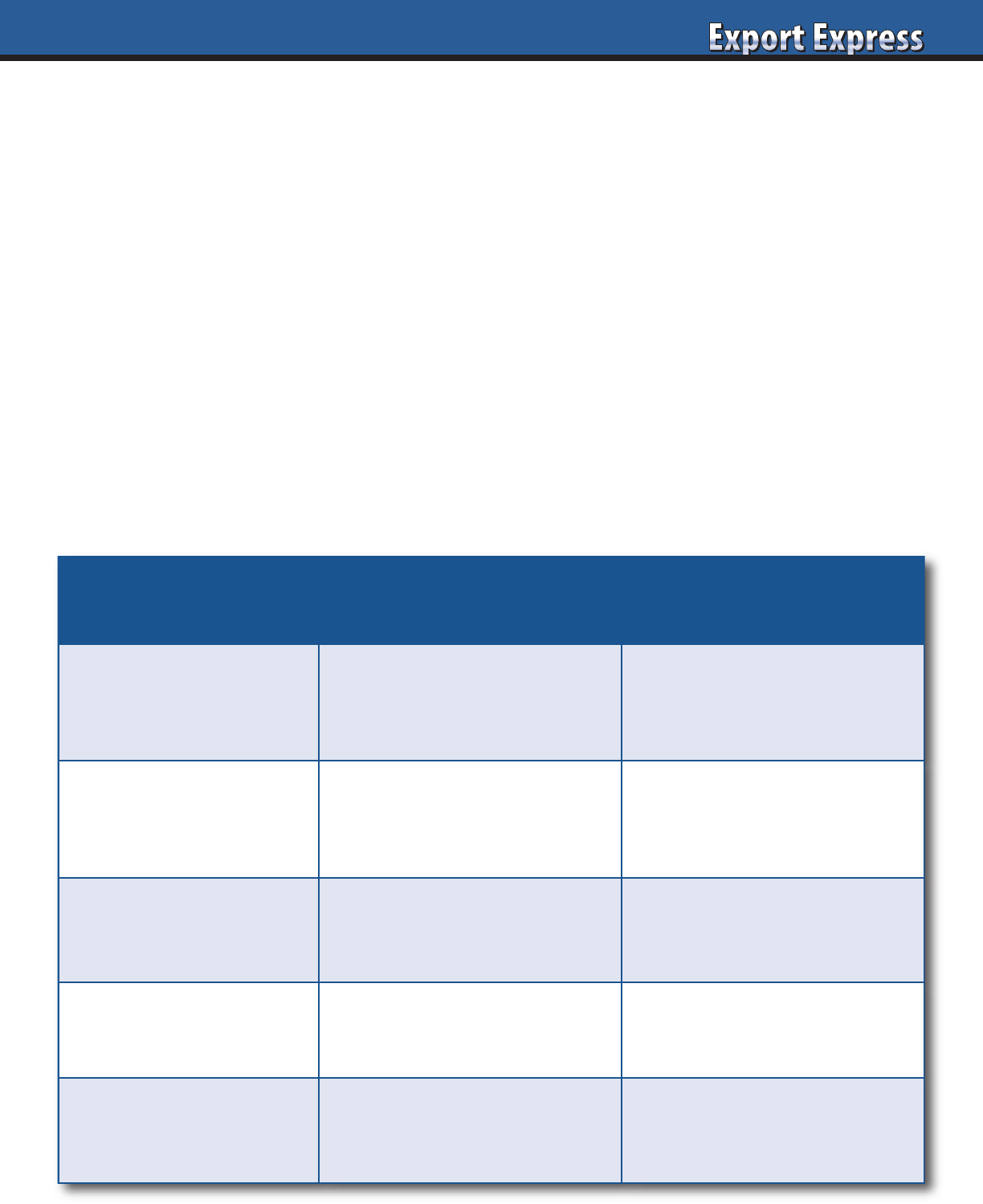
Distributor Search Best Practices
Activity Bad Practice Best Practice
Distributor Profile No portfolio synergies.
Representing similar size,
premium brands from your
aisle/country.
First Contact
Random solicitation
by unknown company.
Trade show or formal
phone meeting with
respected distributor.
Market Visit
Start partnership without
market visit.
Local assessment: office, store
checks, warehouse inspection.
Year I Plan No plan. “Buy and ReSell.”
Logical plan with targets,
activities, timelines, costs.
Price Calculation
Sell at dead net price.
Arbitrary mark-up.
Transparent price calculation
from factory to store shelf.
7
Independent Assessment of Performance for Existing Brands
Visit supermarkets and other retailers to observe category
conditions. At the same time, evaluate each candidate’s performance
for his existing clients. Do his current brands maintain a strong
presence in the market? Or are his brands hard to find on the
shelf? Complete these visits to leading retailers independently,
as an accompanied trip may lead you to check stores which may
not be representative of marketplace reality.
Prepare Distributor Assessment Grid
Create a list of key questions to ask each candidate. Topics
could include local category dynamics, cost of entry, and
distributor success stories. Create a standard grid to evaluate
and compare all candidates on a common platform. Contact
us for our free Distributor Search Guide with assessment grids,
agendas, sample questions and templates for every aspect of
the distributor search process.
What is the Distributor’s Plan?
If selected, what is the distributor’s plan? Customer targets, price
calculation, marketing plan, volume expectations? Timeline and
benchmarks? Key issues? Resources required? Does the plan
align with your vision and the size of the market opportunity?
See Export Solutions’ 10 C Cooperation Model.
Future
Companies conduct rigorous assessments before hiring new
employees. A higher level of intensity must be displayed during
the distributor search process When you choose a distributor,
you are selecting a whole team to represent your company in
a country, not just one individual.
Export Solutions motto:
Select your distributors, do not let your distributors select you.
Select Your Distributors,
Do Not Let Your Distributors Select You!
continued from previous page
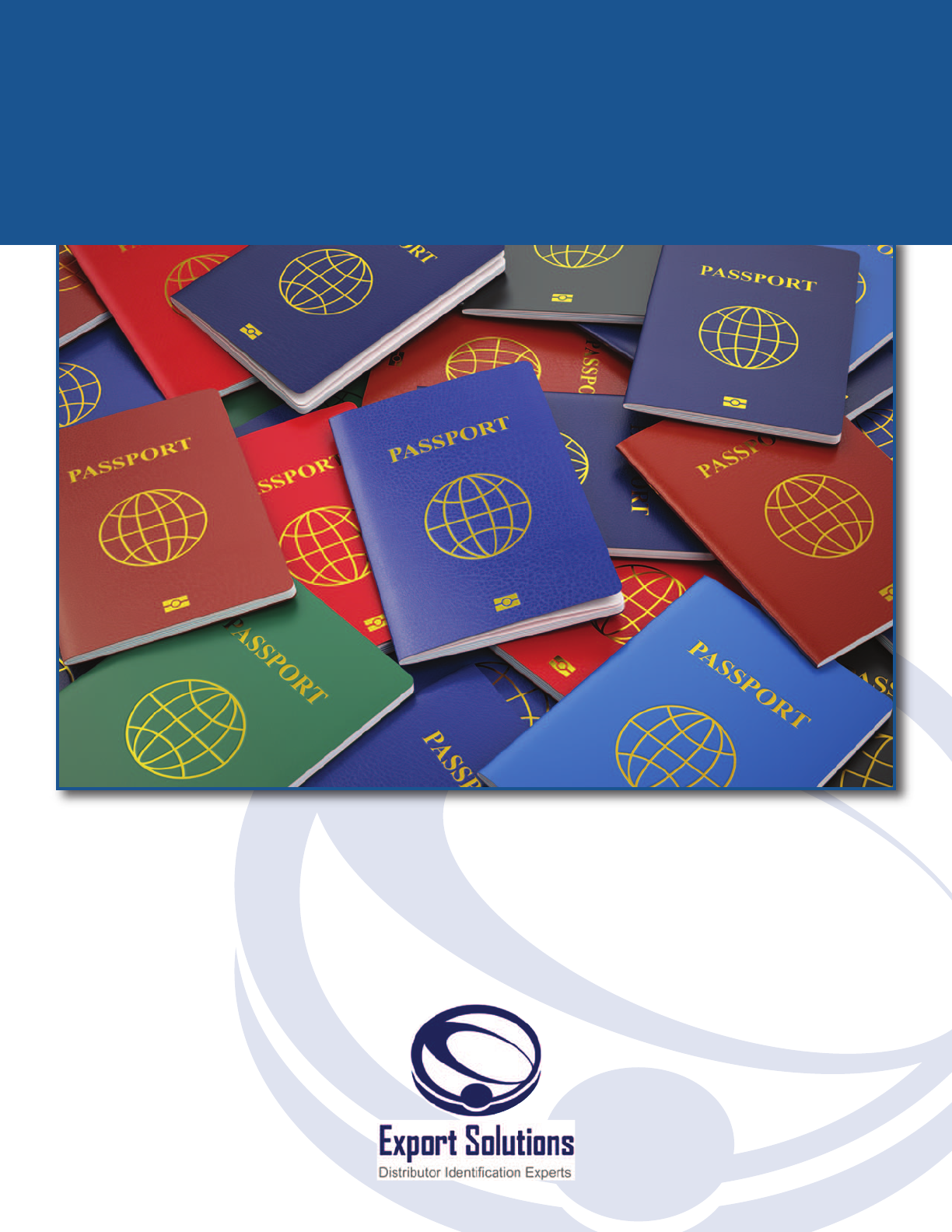
Strategic Export
Development Program
Export Passport
Export Passport
8

Distributor Search Challenge
• Some distributors are too big…
• Other distributors are too small!
3
Export Passport identifies
Prime Prospect distributors
that represent the Right Fit
9
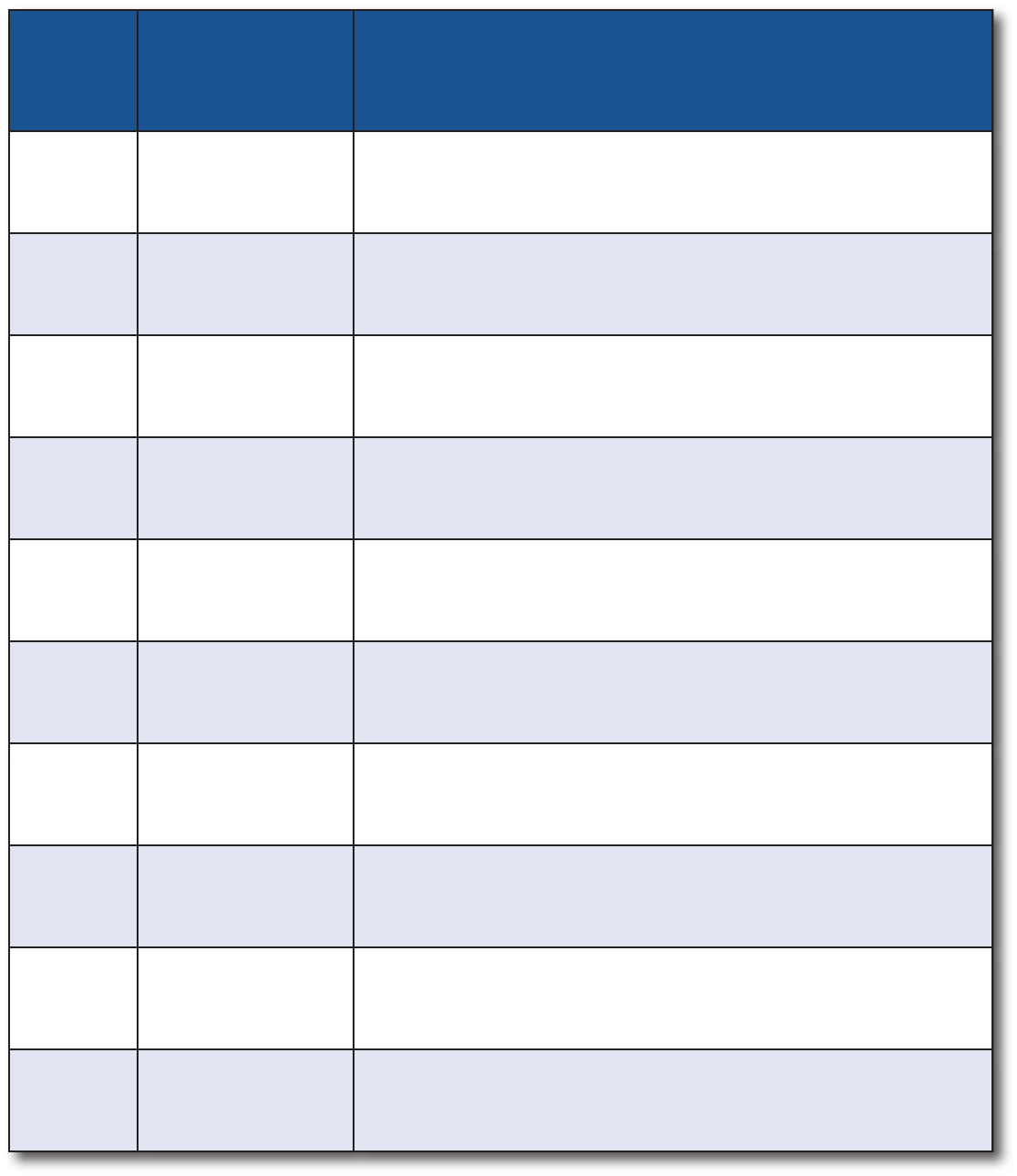
10
Exporter Classification*
Type Description
Export Profile
10 Multinational Strong market share everywhere across multiple categories.
9 Global Multinational. Mix of leading countries and niche participation.
8 Category Champion One core mass category. Strong performance globally.
7 Icon Well known, niche leader. Global availability. Example: Tabasco.
6 Regional Leader Strong share across one continent/region. Some export success.
5 National Hero National treasure, #1 brand. Exports to homesick expats, tourists.
4 Player Respectable share in home country. Opportunistic exports.
3 Participant “Me too” product. Opportunistic exports. “Trader”/private label.
2 Challenger Innovator. Some listings in home country. New to export.
1 Start-up Trying to get traction in home country. Export “dreamer.”
*Export Solutions’ classification system
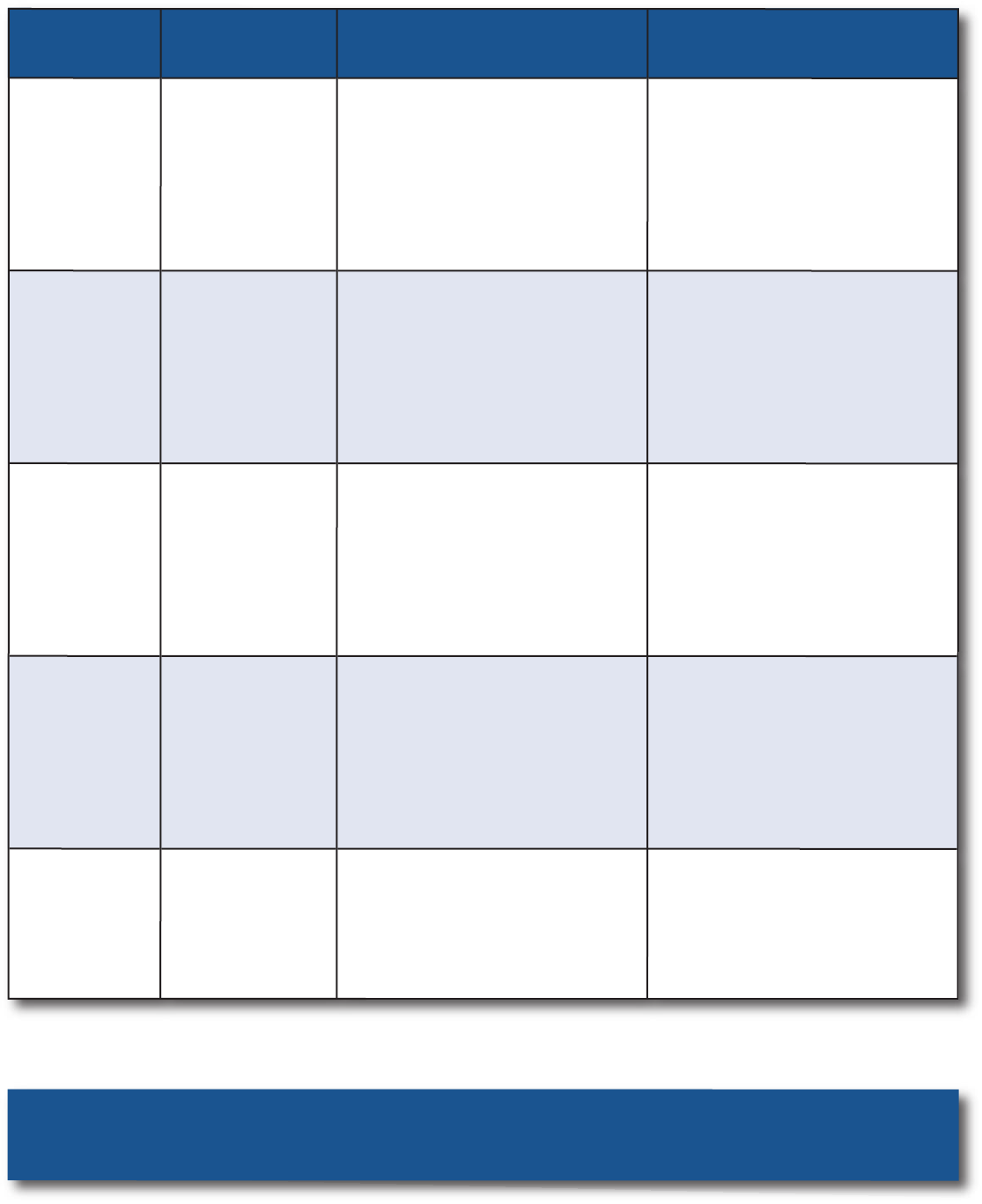
11
Distributor Classification*
Stars
Title
Description
Prime Prospects
HHHHH
Champion
Massive distributor.
Handles multinational/#1
brands across many
categories.
Brand leaders.
$$$ marketing budgets.
Exporter types: 6-10
HHHH
Captain
Category Captain.
Handles leading brands in
one segment.
Category
innovators/leaders.
$$ marketing budgets.
Exporter types: 5-9
HHH
Player
Mid-size distributor.
Handles #2/3 brands or
niche leaders across many
categories.
Differentiated,
premium brands.
$-$$ marketing budgets.
Exporter types: 4-7
HH
Participant
Respected local.
Diversified product
portfolio.
Results equal to investment.
Flexible, challenger brands.
$ marketing budget.
Exporter types: 2-4
H
Pioneer
Small distributor.
Entrepreneurial, open to
innovative new companies.
Start-up brands.
“Pay as you go” marketing.
Exporter types: 1-3
Need more information? Visit www.exportsolutions.com.
*Export Solutions’ classification system
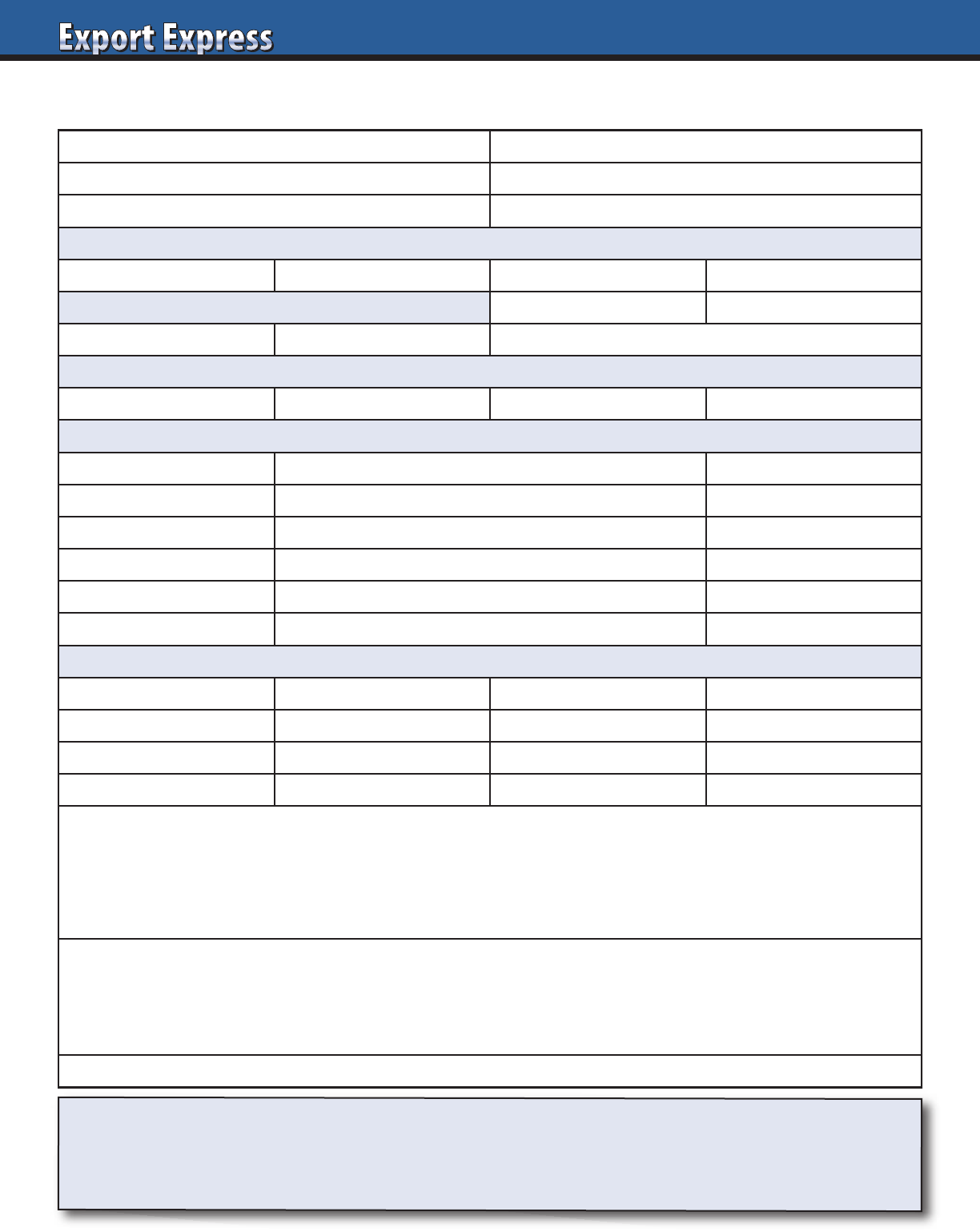
12
Export Solutions recommends creating your own one page Export Distributor fact sheet template. Insist that all candidates
complete the template 100 percent prior to a phone interview or trade show meeting. Pay particular attention to the annual
sales number, brands represented and manufacturer references. Qualified candidates will enthusiastically complete these
sections. “Pretenders” or time wasters will leave these sections blank or disappear saving you time and money!
Export Distributor Data Sheet:___________________________________
Key Contact: Telephone:
Web Site: Email:
Annual Sales: Total Employees:
Employees, by Function:
Key Account Sales Logistics Marketing Merchandising
Company Owned Warehouse: Yes No
If Yes Warehouse Size: Location:
Channel Coverage (percent sales by channel):
Supermarket Convenience Foodservice Other
Top Five Manufacturer Clients:
Company Name Brands Represented Years Service
1
2
3
4
5
Manufacturer references:
Company Name Contact Name Contact Telephone Contact Email
1
2
3
Why are you interested in distributing our brand?
Why is your company the best candidate to represent our brand in the market?
Feel free to attach your company credentials presentation.
(Distributor Name)
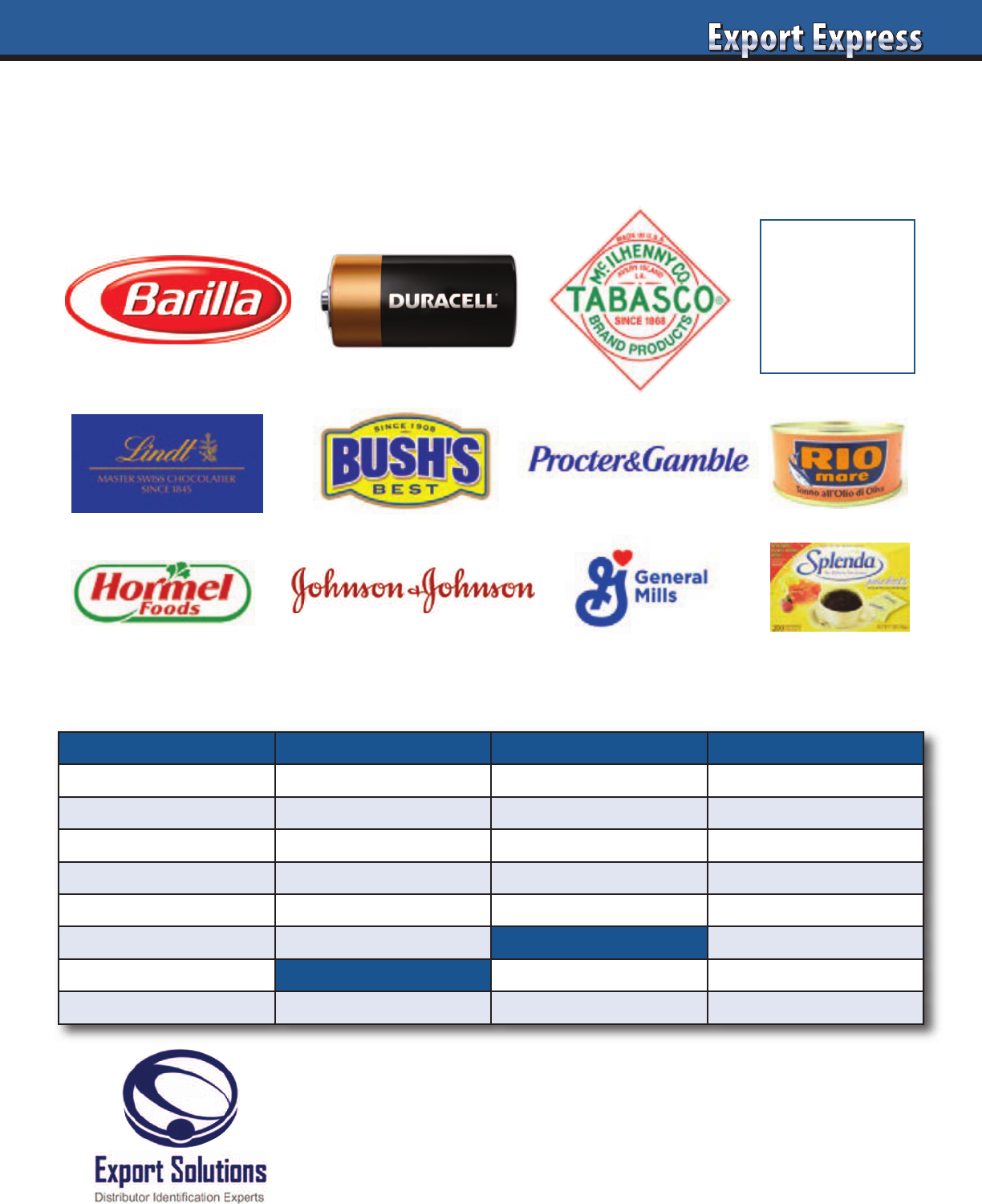
13
Distributor Search Helper for:
Your
Logo
Here
Can We Help You?
Recent Distributor Search Projects
Asia Europe Middle East Latin America
Australia Germany Israel Argentina
China Ireland Kuwait Brazil
Indonesia Netherlands Qatar Colombia
Japan Nordics Saudi Arabia Costa Rica
Malaysia Spain UAE Ecuador
Philippines United Kingdom North America Mexico
Singapore Africa Canada Panama
South Korea South Africa United States Peru
Call the Export Accelerator!
Contact Greg Seminara at greg@exportsolutions.com
to discuss your business development project.
www.exportsolutions.com
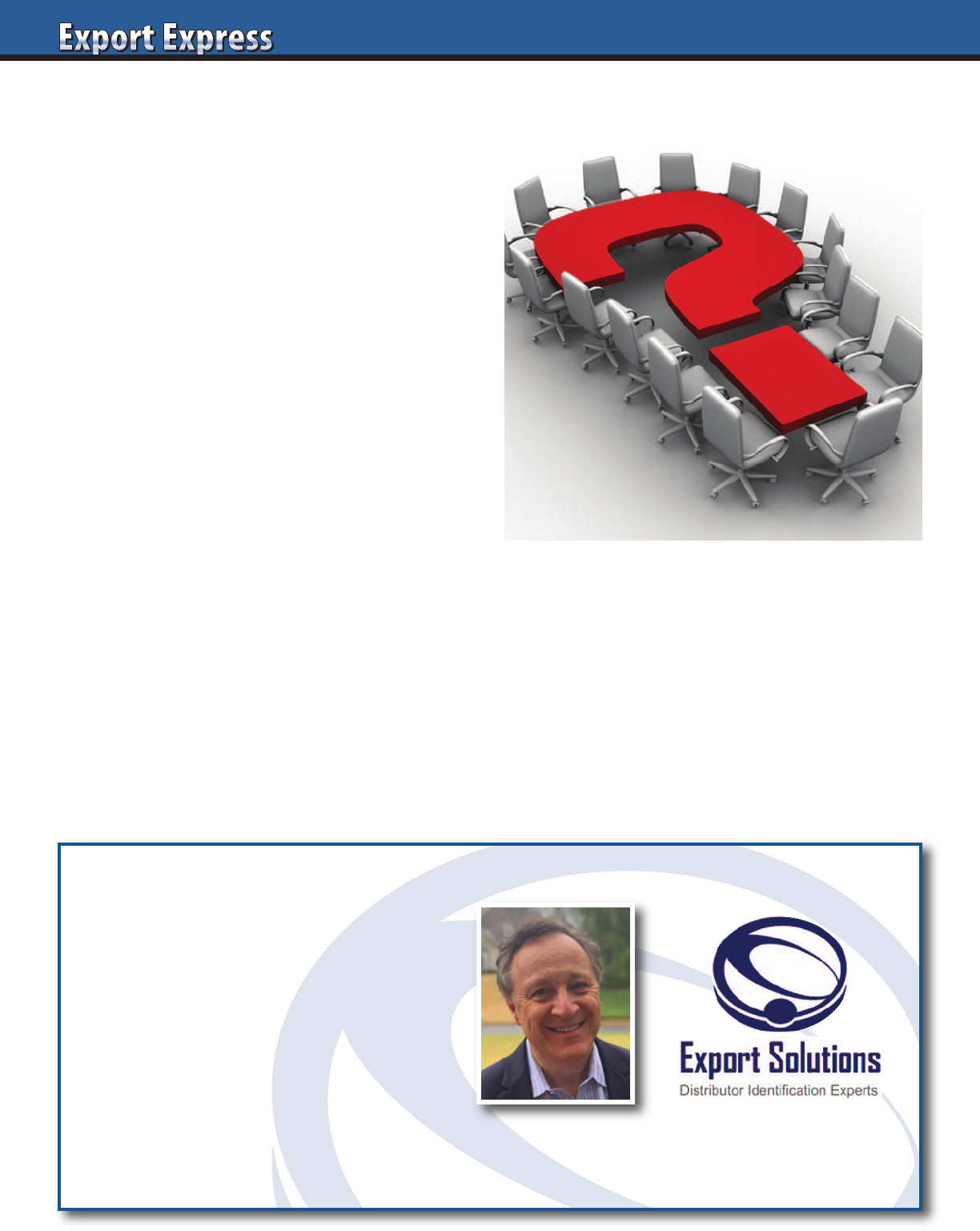
14
10 Questions for Every Distributor Interview
1.Company History
How long have you been in business? Who are the owners?
How many direct, “payrolled” employees do you have?
Approximate annual sales volume?
2. Company Brand Portfolio
What are your top 10 companies/brands represented?
For which channels do you represent each brand?
How long have you represented each brand?
Can you provide senior level references at each “brand owner”?
3. Key Account Buyers
Who is the buyer for our category at the largest retailers in
your market? What other brands do you sell to our buyer?
How frequently do you visit each major customer?
4. New Product Launch Success Story
Provide a recent example of a new brand launch success story.
Key retailer acceptance? Cost of entry? How long did it take?
Key elements of the success strategy?
5. Creative Selling
Provide an example where you took an assigned
marketing/brand support budget and created a successful
local program. How do you measure success?
6. Retail Servicing
How many full time employees do you have visiting retail
stores? Are they located countrywide or just in the capital city?
How do you measure a “good store” in terms of brand presence
versus a “bad store”? Describe your retail reporting system.
7. People
Who would be our point of first contact? Would our contact also
“sell” our brands to major accounts? What other brands is our
contact responsible for? How do we insure that we get our fair
share of attention from your sales force?
8. Business Planning Model
What would your action plan be if we made an agreement to
start with your company? First steps? 90 Day Plan? Reporting?
9. Cost to Serve
How do you model your distributor margin? Range of margin
for our brands? Are you open to promotional spending split
(50/50)?
10. Enthusiasm for our Company
Why is our brand a good match for your company?
Why are you the best partner in the market for our brand?
What commitment are you willing to make?
Talk to an Expert
• International Strategy Road Map
• Fix Problem Markets
• Entry Plans
• Find Distributors in 96 Countries
• Export Workshops
• Motivational Meeting Speaker
Contact Greg Seminara at (001)-404-255-8387 to discuss your business development project.
www.exportsolutions.com
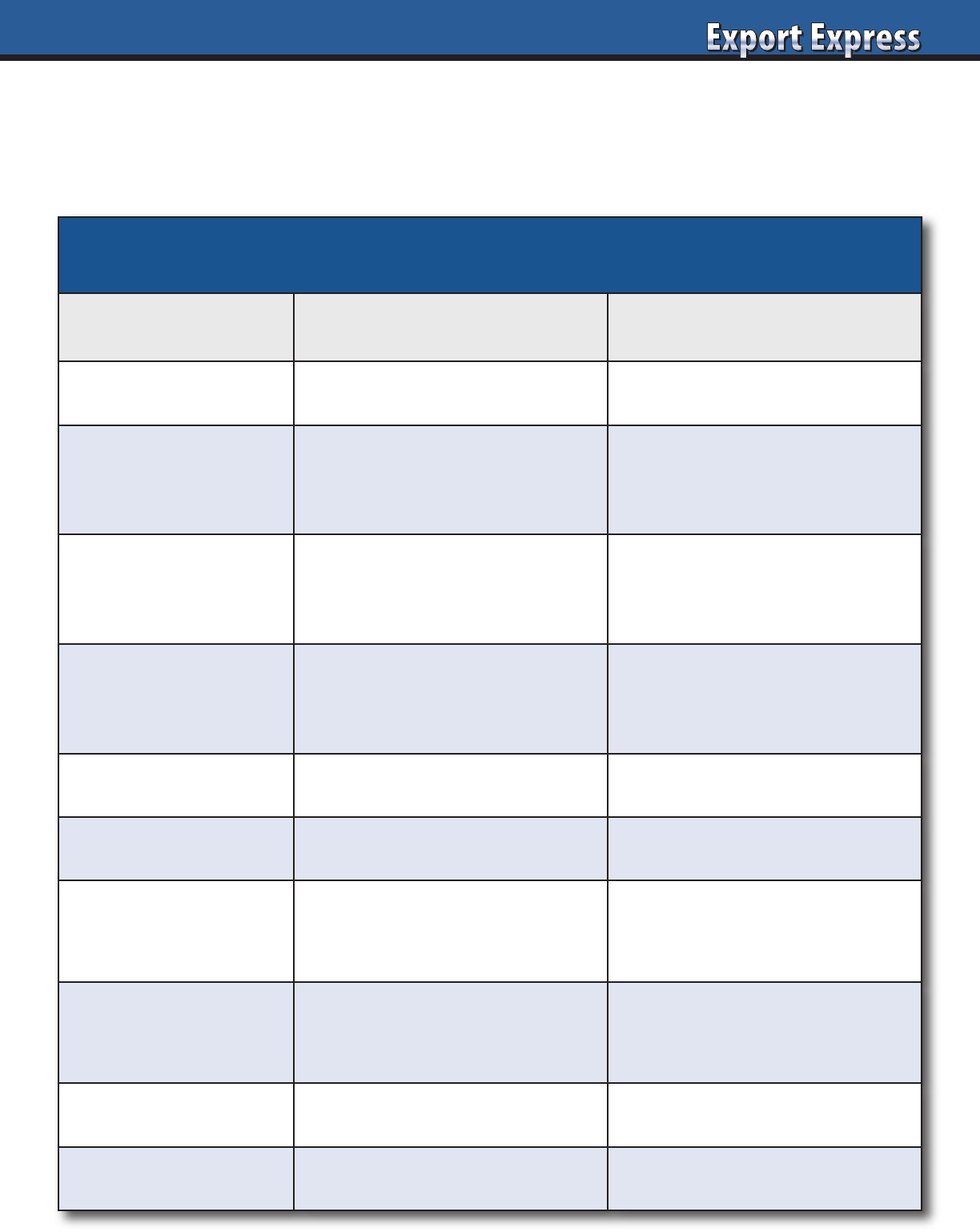
15
Retail buyers are challenged to maximize profits and sales from every available inch of shelf space. Every new item accepted must
improve on the performance of the brand currently occupying that space. Buyers are overwhelmed by new product offerings, all with
ambitious promises. Improve your chances of success by incorporating Export Solutions’ 10 point check list on how to excite your
category buyer about your new product.
How to Excite Buyers – New Product Checklist
Buyers: New Product Assessment
High Interest Low Interest
Category Opportunity Large or high growth Declining or niche
Brand Owner
Multinational or proven local.
Category expert
New foreign supplier
or start-up
Innovation
Something new, supported
by consumer research
“Me too” product
Profit Margin
Enhance current
category margin
Equal to or less than
current category margin
Sales Generates incremental sales Cannibalizes existing sales
Marketing Investment Sampling, social media, PR None
Trade Programs Invests in retailer “push” programs Periodic discounts/rebates
Brand Track Record
Successful at other
local retailers
Unproven in the country
Terms/Conditions Attractive deal structure Typical terms/conditions
Representation Dependable local distributor Small, niche entrepreneur
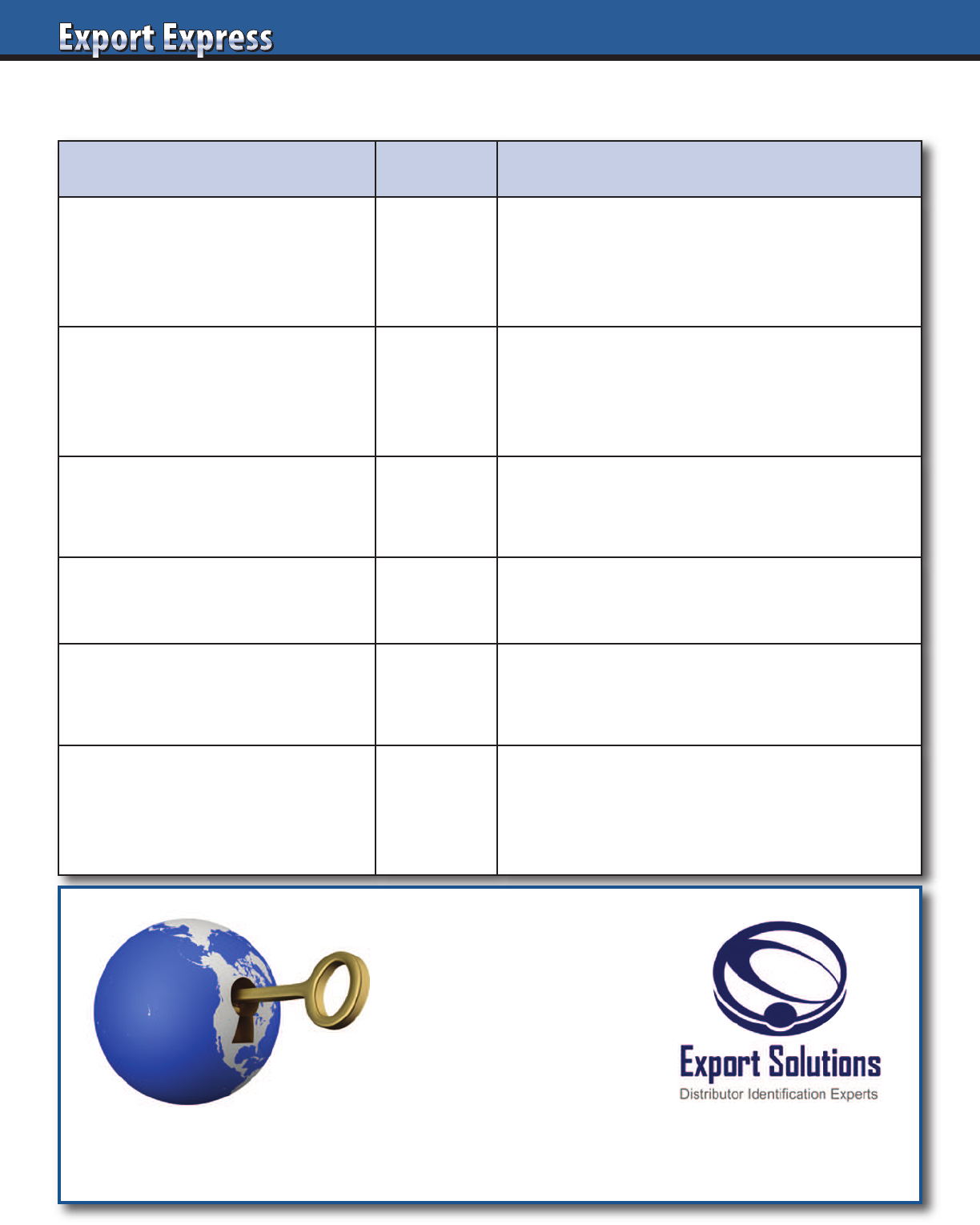
Criteria (weighting) Rating Evaluation Factors
Corporate Credentials 30%
Size, sales force, logistics, # employees.
Reputation (reference check existing brands).
National coverage.
Multi-channel coverage.
Category Expertise 20%
Sells brands in my category.
Shelf space for existing brands.
Current brands selling to target retailer.
Category analysis and insights.
Brand Building 15%
Ideas to build or launch my brand?
Marketing plan, cost, timing.
Success stories.
Cost to Serve 15%
Fair, transparent model relative to size
of business, brand investment, and
work required.
Enthusiasm for
My Brand 20%
Advance preparation, CEO involvement.
Follow-up on commitments.
Alignment with your vision.
X Factors: People, Admin.,
Professionalism, etc.
+/-
CPG/FMCG background for leaders.
Efficiency of scheduling meeting.
Office environment.
Do you enjoy the people?
Rating System
Rating Score
Excellent 5
Very Good 4
Average 3
Fair 2
Poor 1
Contact Greg Seminara at (001)-404-255-8387 to discuss your distributor search project.
www.exportsolutions.com
New Distributor Assessment Grid
16
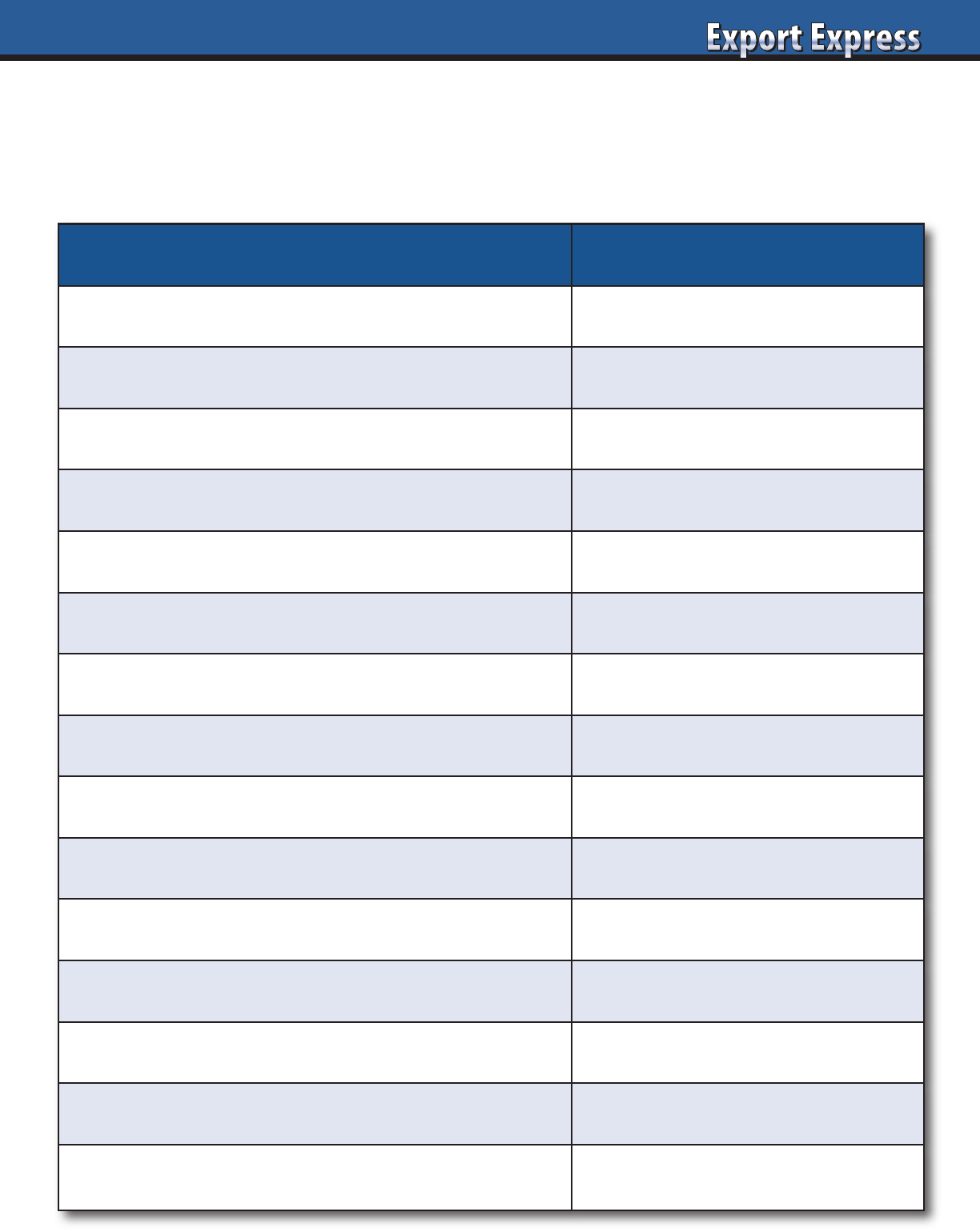
17
Distributor Capability Assessment
Export Solutions established 15 assessment criteria to identify “Best in Class” performers as well as “under
achievers.” Many distributor relationships extend 10 years or more. Is your distributor network still a “good fit”
for your current business requirements? Template can also be used as New Distributor Reference Check form.
Assessment Criteria Rating: (10 = Best)
Category Expertise/Critical Mass
Focus/Time Dedicated to your Business
Joint Business Plan Development, Execution, Delivery
Alignment with Brand Owners Vision. Relationship.
Cost to Serve (fair margin, extra costs)
Assortment/Shelf Space
Promotion Creativity, Effectiveness, and Efficiency
Key Account Relations (Senior level, buyer)
Leadership/Owner (engaged & committed to us?)
Brand Manager (seniority, clout,creativity)
Multi Channel, Multi Regional Coverage
Financial Stability, Payment Record
Supply Chain Management & Forecasting
Problem Solving: rapid response?
Sales Results versus Budget, Market, Category (CY, PY, 3 Years)
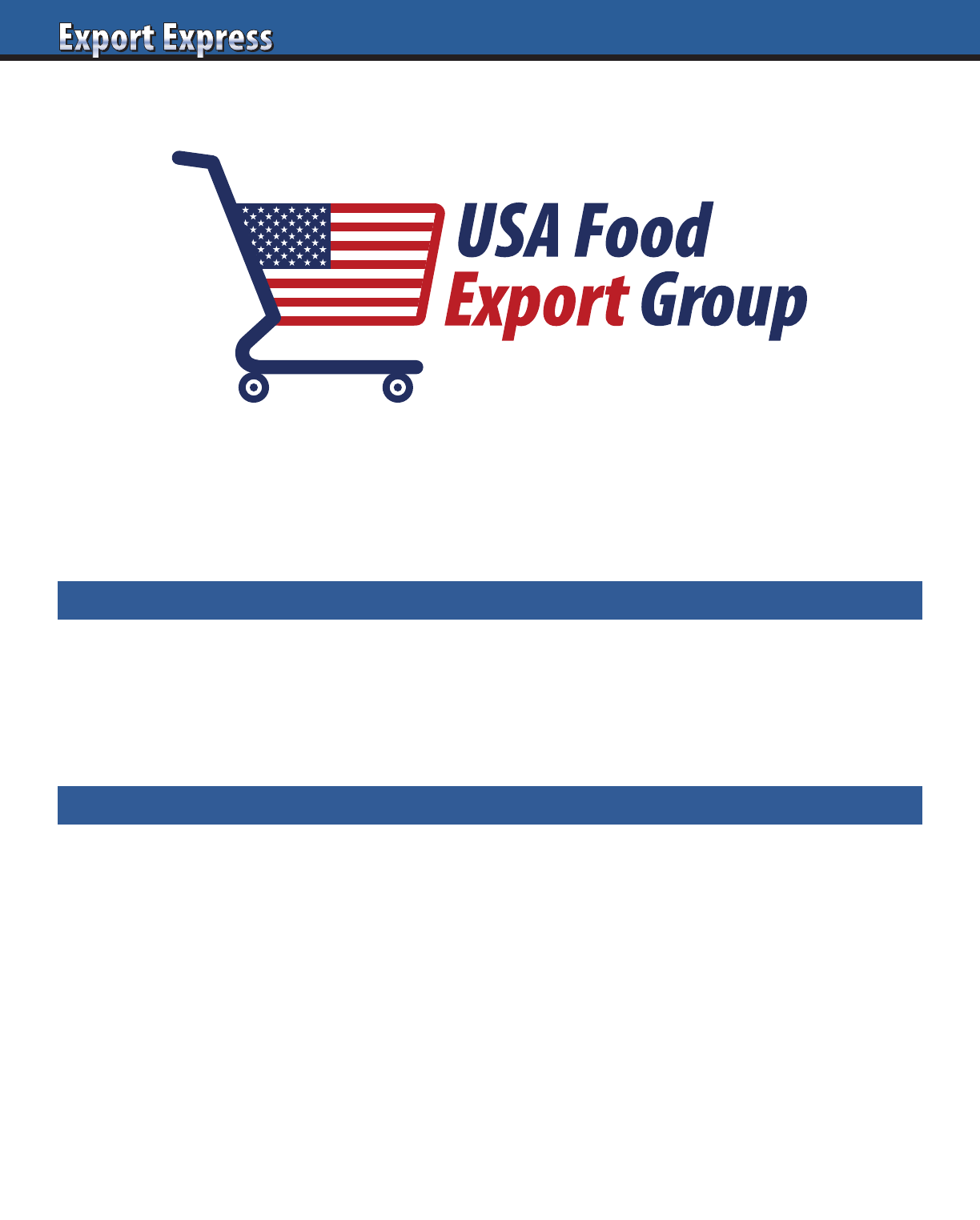
18
Introducing
America’s Favorite Brands
Executive Board
Export Solutions Smucker’s Tabasco
Greg Seminara, CEO Danny Berrios, President Megan Lopez, Vice-President
General Mills Sun-Maid
Eric Saint-Marc Carsten Tietjen
Advisory Board
Bazooka Candy Blue Diamond Bob’s Red Mill
Santiago Ricaurte Dale Tipple Jan Chernus
Bush Beans Campbells Church & Dwight
Dave Bauman Julio Gomez Arun Hiranandani
Ferarra Candy Heartland Idahoan
Daniel Michelena Tom Theobald Ryan Ellis
Johnsonville Sausage Kao USA Keurig Dr. Pepper
Cory Bouck Julie Toole Billy Menendez
Mizkan Reynolds Welch’s
Noel David Chris Corey Marc Rosen
19 Companies | 200+ Top Brands | $80 Billion Combined
View our activities for export managers – www.usafoodexport.com
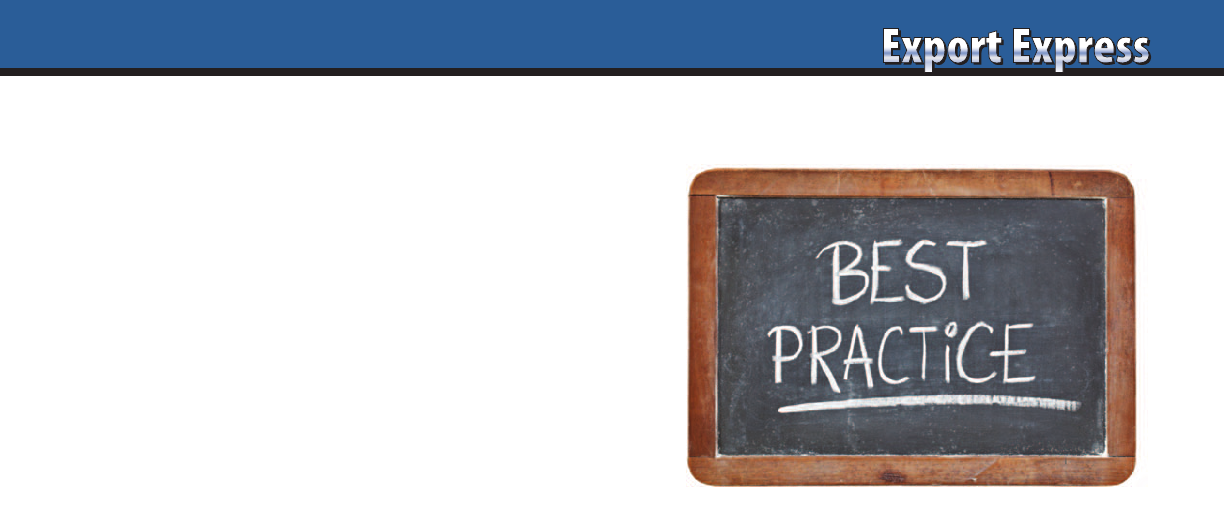
19
Have you ever experienced an incredible
first meeting with a distributor? Strong
alignment, good fit, everyone smiling,
timelines agreed. Then, nothing happens!
The export manager may take up to six
months to translate his outlook from
“done deal” to “dead deal.” There are
two reasons why this occurs.
First, distributors are positive,
competitive athletes, always striving
to win new business. However, in some
cases, the distributors wake up after time
to reflect and decide they really weren’t
that interested in the brand after all.
Failure also results when a strong
first personal meeting at a trade show
or distributors office is followed by
a relationship buried in email
communication, with no personal touch.
Below are Export Solutions’ Ten Tips on
converting promising new business leads
into tangible business partnerships.
1. Zoom/Teams – Don’t Depend on Email
Motivated distributors still return phone
calls, but frequently receive up to 200
emails a day, many from existing brand
partners. Top distributors’ business days
are captured by a continuous flow of
meetings with customers, principals,
and their own employees. Best bet is to
call a potential partner or set up Zoom
meetings. Email is okay for routine
correspondence, but too easy to ignore
or delete.
2. Follow Up Immediately & Frequently
Time slips away, as Export Managers
focus on existing businesses and
“problems of the day.” One tip is to
put regular follow up reminders on
your computer calendar.
3. Focus on 5 C’s: Category Review, Calculation,
Cost of Plan, Compliance, Contract
There are 5 critical elements to translate
a “lead” into shipments.
Category Review: How does your
category look in target country? Category
size, competition,pricing,margins, and
merchandising activity.
Calculation: What is the distributor’s
proposed calculation from your factory
gate to the store shelf? What are standard
costs like duties and taxes? What are
flexible or negotiable like trade discounts
and distributor margin?
Cost of Plan: Each brand needs a plan
to gain market entry. This includes key
account “sell in,”
followed by consumer
and trade promotion
activities. Look at the
distributor’s proposed
plan, as well as several
options with different
price tags.
Compliance: Many
countries feature a
product registration
process and labeling
requirements. In some
countries, this step is
easy with automatic
compliance for a USA
or European brand. Or a
simple solution with a small distributor
applied sticker. In other countries like
Japan or Indonesia, plan on one year or
more to navigate the complex process.
Contract: “Ready, Set, Go” can be delayed
by 3-6 months due to contract negotiations.
Company lawyers demand 20 page
agreements in English that even the
Brits can’t understand. Distributors
prefer two page letters of understanding
or a handshake deal. Do what is right
for your business, but expect delays
and frustration.
4. Request References
A good idea is to quickly request
distributor references from other brands
they handle. Motivated distributors will
send impressive references right away.
Also, have your credit department run
a Dun and Bradstreet or Equifax report
as soon as possible. Many trade show
meetings are with “pretenders” who state
exaggerated claims and are ultimately too
small to handle your brand. Better to
discover this sooner versus later.
5. Move Beyond the Distributor Owner/MD
The distributor owner “writes the
checks,” but frequently serves as a
“bottleneck.” The key is to quickly get
your brand assigned to a “worker” whose
task is to move your project through the
system and produce an order!
6. Establish Realistic Timelines
Sync with category review dates and avoid
holiday periods. Update timelines
frequently. New distributor relationships
always take longer. Plan on six months
from first meeting to first shipment. Be
pleasantly surprised if things move quicker.
7. Distributor Response Time
Signals Interest Level
How often do you check your emails?
Probably every hour. When I work
on distributor search projects for well
known brands like Pringles, Tabasco,
or Barilla, distributor response is
lightening fast. Motivated distributors
will chase you if they are interested
because they are anxious to start selling
your brand!
8. Establish Regular Checkpoint Calls
I suggest every two weeks at a
minimum. Use a common document of
priorities, action steps, and due dates.
9. Visit the Distributor
It’s amazing the amount of progress
that will be made during a meeting
at the distributor’s office. Also, the
distributor will work hard in advance of
your visit as your project moves up the
priority list and they want to guarantee
a favorable impression. A visit to the
distributor’s market signals your
commitment. Beware if the distributor
is reluctant to schedule your visit. Either
he has changed his mind about a
partnership or his office and capabilities
do not match the bold promises made at
the initial trade show meeting.
10. Parallel Path Two Candidates per Country
A favorable first meeting represents an
excellent start. However, there are still
many steps (think 5 C’s in point 3)
before you sign a contract and receive
your first order. Always keep two
candidates in the process, in case your
top choice disappoints. This can be
tough, but represents a better option
than needing to start the entire process
over again.
Ten Tips: Converting Promising Leads to New Partnerships

Searching for New Distributors?
Export Solutions makes life a little easier for more than 3,000 export managers.
Our time saving distributor database serves as a “helper” for identifying more
than 9,200 qualified, local brand builders in 96 countries.
“Select Your Distributors,
Do Not Let Your Distributors Select You”
www.exportsolutions.com
Search by Country, Category, or Country of Origin
20
Local Experts
Distributor Coverage
Asia: 2,030
Europe: 3,139
Latin America: 1,574
Middle East: 937
USA/Canada: 1,464
Category Experts
Distributor Coverage
Beverage: 1,691
Candy/Snack: 2,713
International Food: 3,276
Health & Beauty: 1,800
Natural Food: 837
Country Experts
Distributor Coverage
German Brands: 648
Italian Brands: 1,397
UK Brands: 682
USA Brands: 1,189
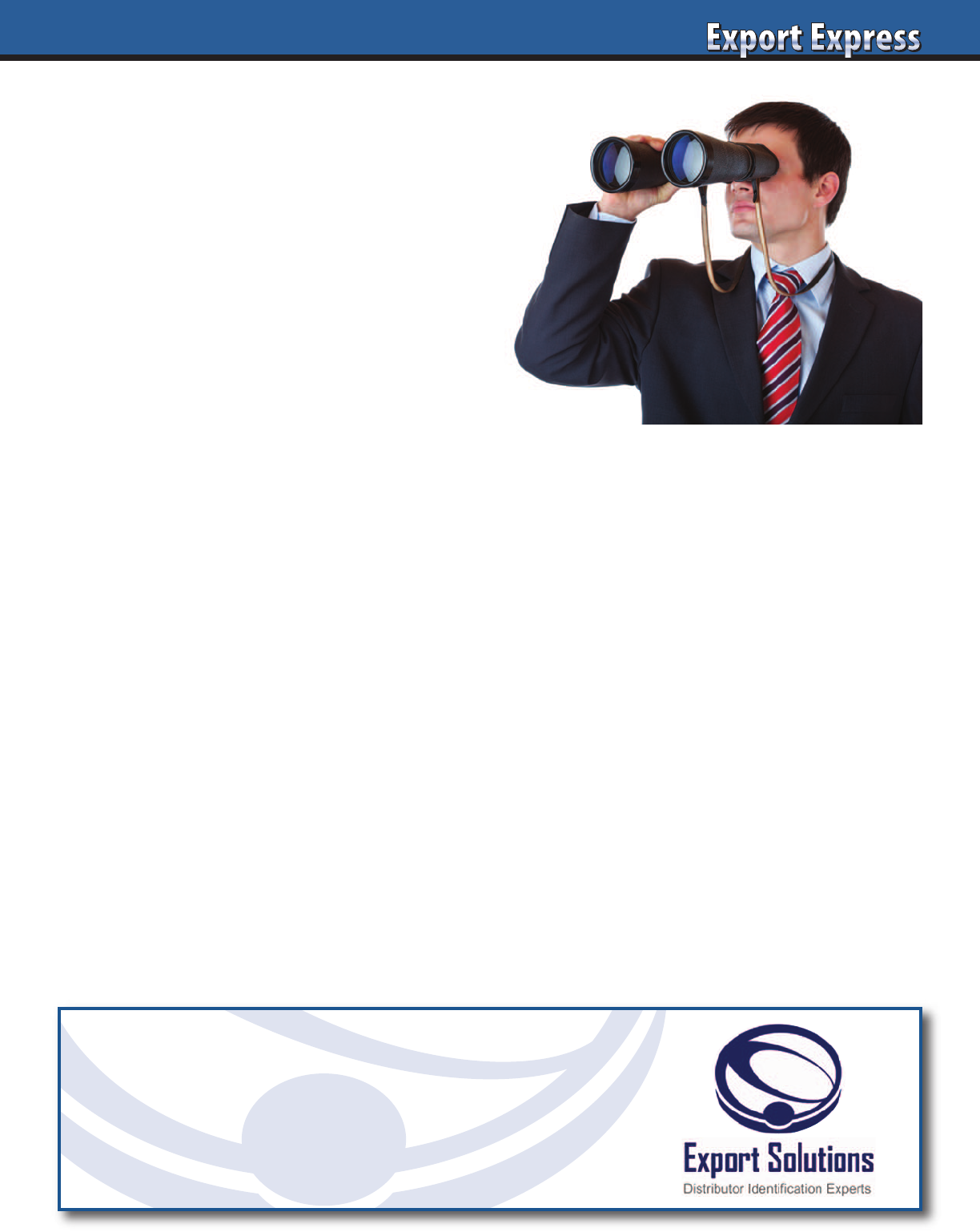
21
1. Case
Manufacturer supplies a business case
confirming brand “aspirations” for the
country: Key items in portfolio, estimated
base pricing, volume/market share
expectations, and investment model.
2. Category Review
Distributor supplies a local review
of category competitors, pricing,
and merchandising practices.
3. Capabilities
Distributor shares detailed organizational
capability and customer coverage.
Could include references from existing
suppliers represented. An important step
when there are two or more candidates
under consideration.
4. Commitment and Costs
What is the Year 1 Plan and Forecast?
Targeted listings, marketing activities,
launch budget and volume estimate
associated with the spending plan.
5. Calculation – Value Chain
Line by line, build up from port to retail store
shelf. Include currency assumptions.
6. Compliance
Highlight product registration and
label requirements. Typical timelines
for compliance?
7. Captain of Team
Who will be our day-to-day brand manager or
first point of contact? Which senior executive
will serve as our “Brand Champion?”
8. Contract
Options include formal contract, letter
of understanding, or handshake deal.
Begin this process early!
9. Consumer Marketing
What are planned activities to generate
consumer trial and repeat purchases?
Trade marketing, consumer marketing,
social media, etc.
10.Calendar /Close
Distributor supplies a detailed timeline of
all activities. When can we expect first order
and delivery to support launch?
Frequent checkpoint calls or meetings.
10 C’s – Cooperation Model
Looking for Good Distributors?
Export Solutions’ database covers
9,200 distributors in 96 countries.
www.exportsolutions.com
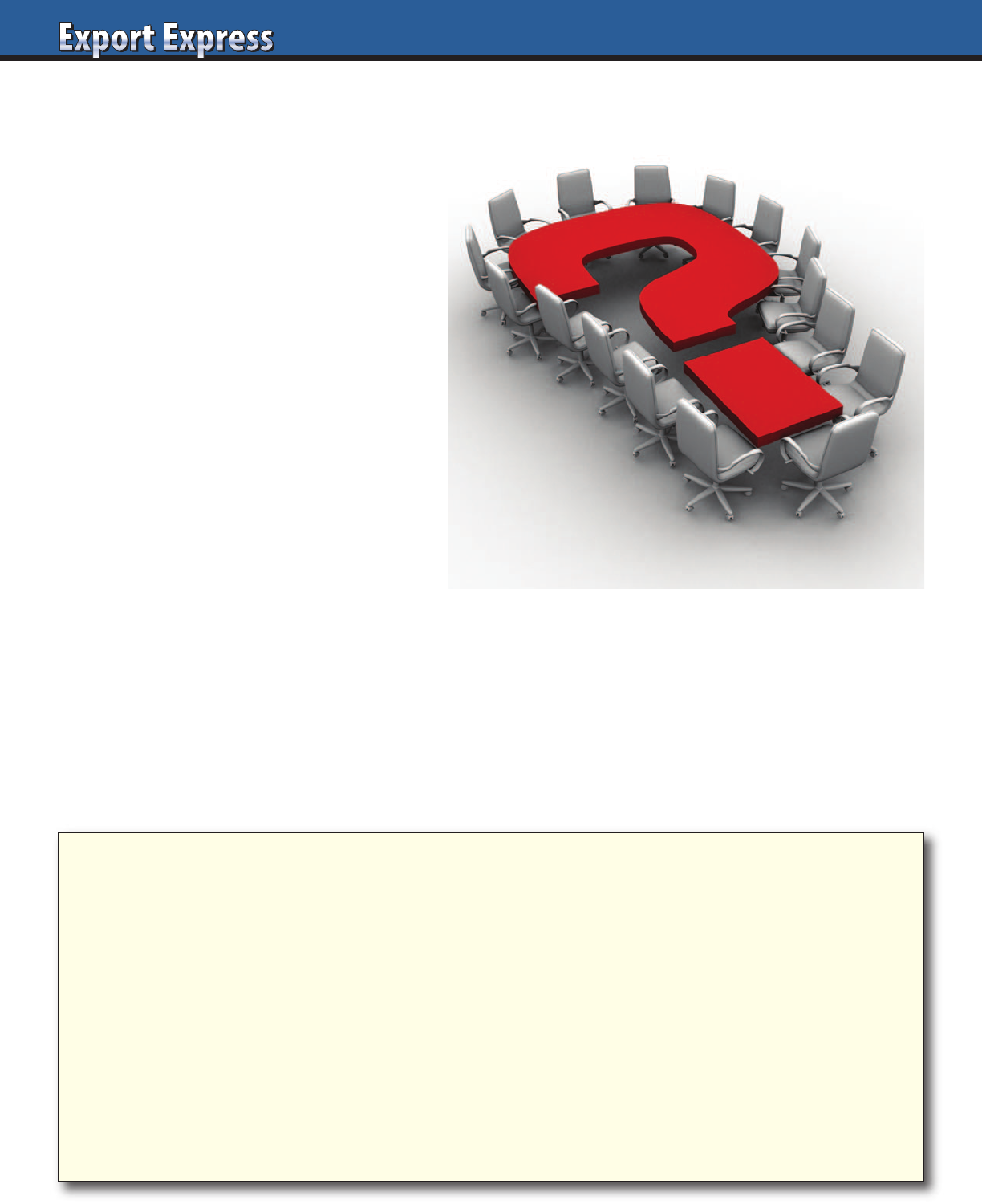
Ten Questions: Developing your Cooperation Model
1. Size of the Prize
What are the distributor’s year one and year three
volume estimates? How big is the category? Is the
category growing?
2. Key Account Listings
What listings can we achieve in year one? Who will
be our biggest customers? Will there be differences
in retailer acceptance by region or channel?
3. Trade Reaction
What will retailers like about our brand? Any potential
barriers? Which retailers will be most challenging?
4. Brand Manager
Who will be our primary point of contact?
Experience level? Workload?
5. Marketing Investment
What budget is requested to achieve our mutual
shipment objectives? Who pays for marketing costs?
Which costs are split?
6. Currency Fluctuation
What assumptions are made in your price calculation?
What happens if the currency fluctuates more than
5 percent in either direction? How do you handle
price increases?
7. Distributor Margin
What is your distributor margin? What services are included?
Any other fees or regular costs if we work together?
8. Trial and Repeat
What strategies are required to generate consumer trial
and repeat purchase? What works? How do you conduct
post-promotion analysis and measure payout and success?
9.Focus
Where will our company rank in terms of volume contribution
to your overall business? How will we secure share of mind
during our critical first year?
10. Issues
What are the biggest issues we will face? Barriers to success?
What must happen to win?
5 Critical Questions to Thrive in 2025
1. Are we willing to pursue international acquisitions?
2. Would your company consider overseas contract packing (versus export)?
3. Can we test a high spend investment plan (“The Right Way”) in a strategic country?
4. Would your company invest aggressively in offshore head count in advance of sales?
5. Europeans: can we develop the USA market implementing the USA playbook? USA factory,
broker network, competitive pricing, USA team, channel strategy, 30-50% trade promotions?
22

23
Picking the right distributor is not an exact
science. I know that each of us experiences
moments of frustration when we question,
“why did we ever pick that distributor?”
Believe me, an equal number of examples
exist where a distributor may share the same
emotion about your company! Frequently,
a partnership is christened by a positive
distributor interview or enthusiastic meeting
at a trade show. Everyone is always in a
hurry to negotiate prices and a contract and
secure the first order. However, in many cases the decision to work together is cemented
without a formal business plan where expectations, road map, and KPI’s are established.
Unfortunately, one year later both parties may find themselves pointing fingers at each
other due to disappointing results.
I recently completed a distributor search project in the Middle East. We interviewed a
number of good candidates and identified two with high potential. Last month, I was
notified by the export manager that he selected one of the candidates. I supported his
decision, but questioned how the plan proposals for the two distributors compared?
The vague response confirmed no plans, just that he liked one distributor better.
This year, another project brought me to a country where a new distributor had been
appointed less than one year earlier. Initial results were severely below expectations.
The first question I asked the brand owner related to the reconciliation versus the
original one-year business plan. What happened? In this case, there was general
understanding about the direction of the partnership, but never alignment around
a one-page scorecard with KPIs and a logical road map.
Launching a new distributor relationship is like the birth of a child. A mother rarely
leaves the side of a baby, providing comfort, safety, and nutrition until the infant is
healthy and able to survive without constant oversight. The same philosophy must
apply to a distributor partnership. During the first few months, there must be frequent
communication, care and visibility from the supplier with the new “brand parents.”
This approach results in a healthy brand. Too many times, I see a new distributor
appointed without anyone from the manufacturer committed to visit the country
for the sales launch meeting or conduct a retail sales audit within the first sixty days.
Parents bring their newborn to the doctor frequently for checkups.
Listed below are Export Solutions’ tips on creating a clear annual plan for each country
and distributor partner.
1. Select new distributors based upon the quality of their year one plan:
targeted listings, volume forecast, and retail penetration.
What is their written commitment and timeline for achievement?
2. Current distributors should also have a confirmed one page plan.
Merchandising events, new listing targets, spending, and shipment targets.
Many brand owners treat distributors as good customers which is a smart approach.
The distributor is paying your invoice, not a retailer. Successful distributor partnerships
thrive when both parties are aligned and committed to a simple, one-page plan.
Looking for a sample format? I’ve prepared a one-page business plan template that
is freely available in the Export Tips section of my web site or simply email me.
What is your annual plan for each country?
www.exportsolutions.com
Greg Seminara
404-255-8387
“Spend Time Selling to Distributors versus Searching for Distributors”
What is the Plan?
Strategic Services
Contact Us for
Export Solutions
1. Identify Best in Class
Distributors: 96 Countries
2. Best Practices
Export Strategy
3. Distributor Management
Workshops
4. Export 101:
Let’s Get Started
5. New Market
Prioritization
and Launch Plan
6. Personal Distributor
Introductions:
96 Countries
7. Walmart International
8. Distributor Contracts,
Margins, and Fees
9. Meeting Speaker
10. International
Strategy Expert
Strategic Services
Contact Us for
Export Solutions
1. Identify Best in Class
Distributors: 96 Countries
2. Best Practices
Export Strategy
3. Distributor Management
Workshops
4. Export 101:
Let’s Get Started
5. New Market
Prioritization
and Launch Plan
6. Personal Distributor
Introductions:
96 Countries
7. Walmart International
8. Distributor Contracts,
Margins, and Fees
9. Meeting Speaker
10. International
Strategy Expert
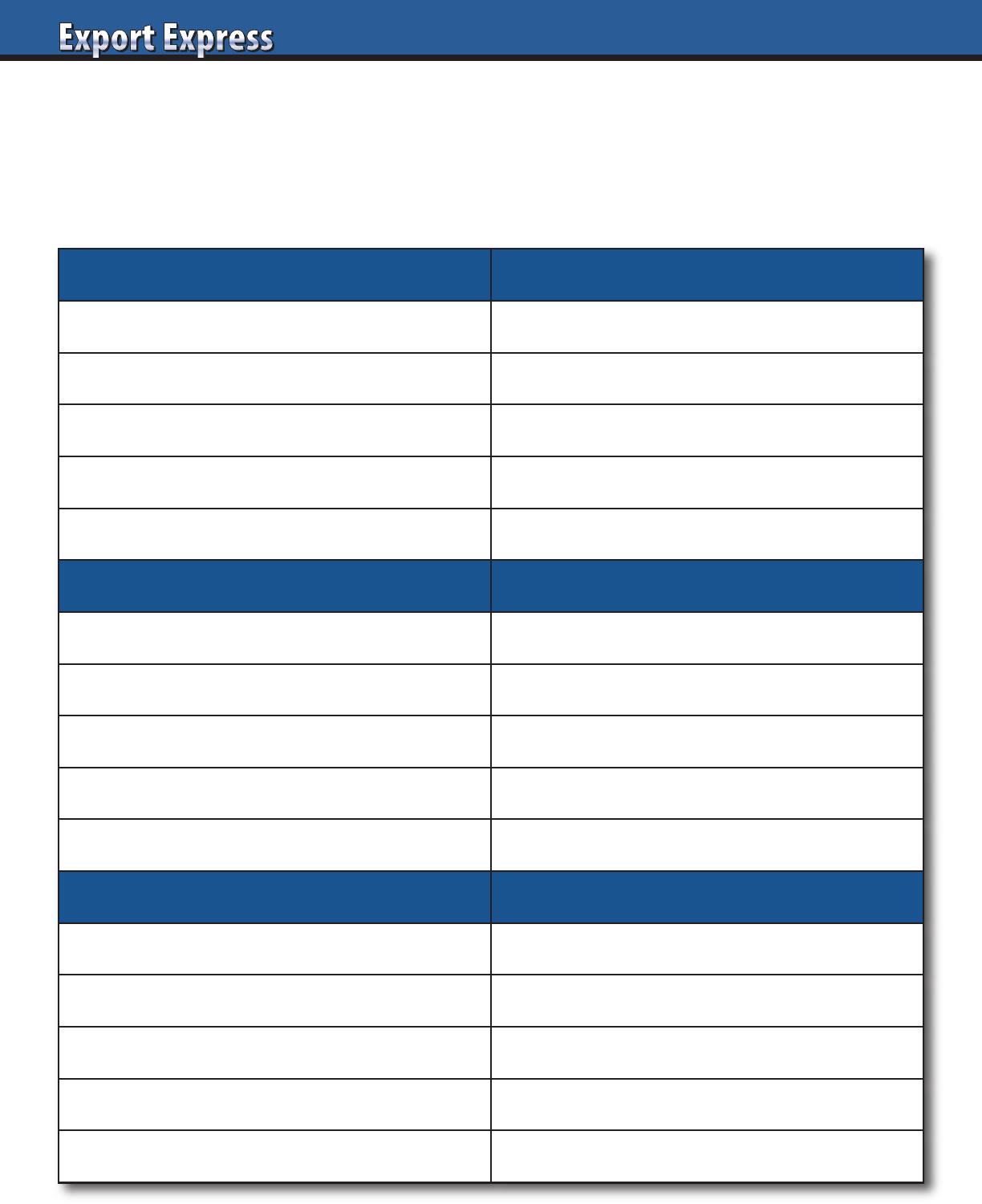
24
“The Right Way
”
– New Country Launch
Retail buyers and distributors are receptive to brand launches from multinationals. Why?
Multinationals succeed, as they introduce new products “The Right Way.” Export Solutions recaps
30 components of launching “The Right Way.” Exporters create magic with limited budgets!
Winners check as many boxes as possible on “The Right Way” scorecard.
Product Retailer
o Meaningful innovation – not “me too” o Boost category sales, margin, and profit
o Consumer market research insights o Syndicated data (Nielsen) – category facts
o Technical confirmation of product differentiation o Invest in retailer “push” programs
o Reasonable retail price – premium (not sky high) o 4-6 high value promotional events per year
o Test market results – similar country or retailer o Retailer VP, distributor CEO at intro call
Marketing Excitement
o 360 marketing plan: TV, in-store, social, PR o Launch party – memorable location
o Sampling o PR, social media, trade press
o Social media o Celebrity endorsement
o Displays: end of aisle and shelf blocks o Distributor sales contest
o Special offers – retailer fliers o Donation to local charity
Team Scorecard
o Distributor – best in class, category expert o Year 1: invest; year 2: break even; year 3: profit
o Local manager – launch oversight o Sales volume (retail sell-out)
o Marketing, social media, PR agencies o Market share
o Brand/technical resource from headquarters o Retail availability (weighted distribution)
o Total distributor engagement: reps. to CEO o Year 2 commitment and enthusiasm
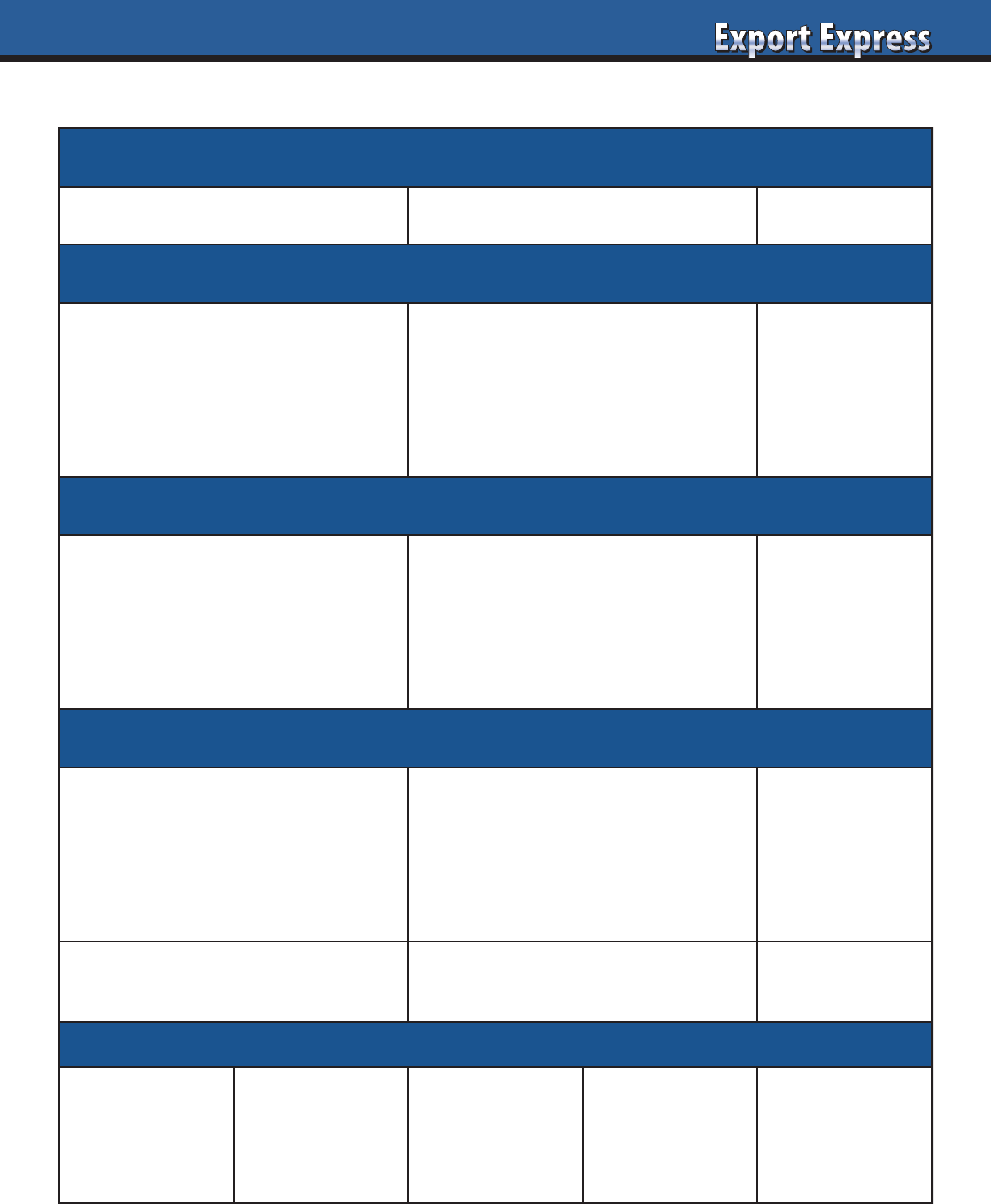
25
Launch Plan Proposal – Year One*
Brand Objective
Volume: _______________ Wtd. Distribution: _______________ Share: ________
Consumer Marketing Activities
Activity
1.
2.
3.
Rationale Cost
Trade Marketing Activities
Activity
1.
2
3.
Volume Cost
Listing Fees
Customer
1.
2.
3.
# SKUs, Space, Promotion Support Cost
Total Year One Volume Total Year One Cost Wtd. Distribution
Distribution Achieved with Above Spend Level
Customer
1.
2.
3.
Stores % Country # SKUs Volume (annual)
*Feel free to attach other pages to support your recommended launch plan.
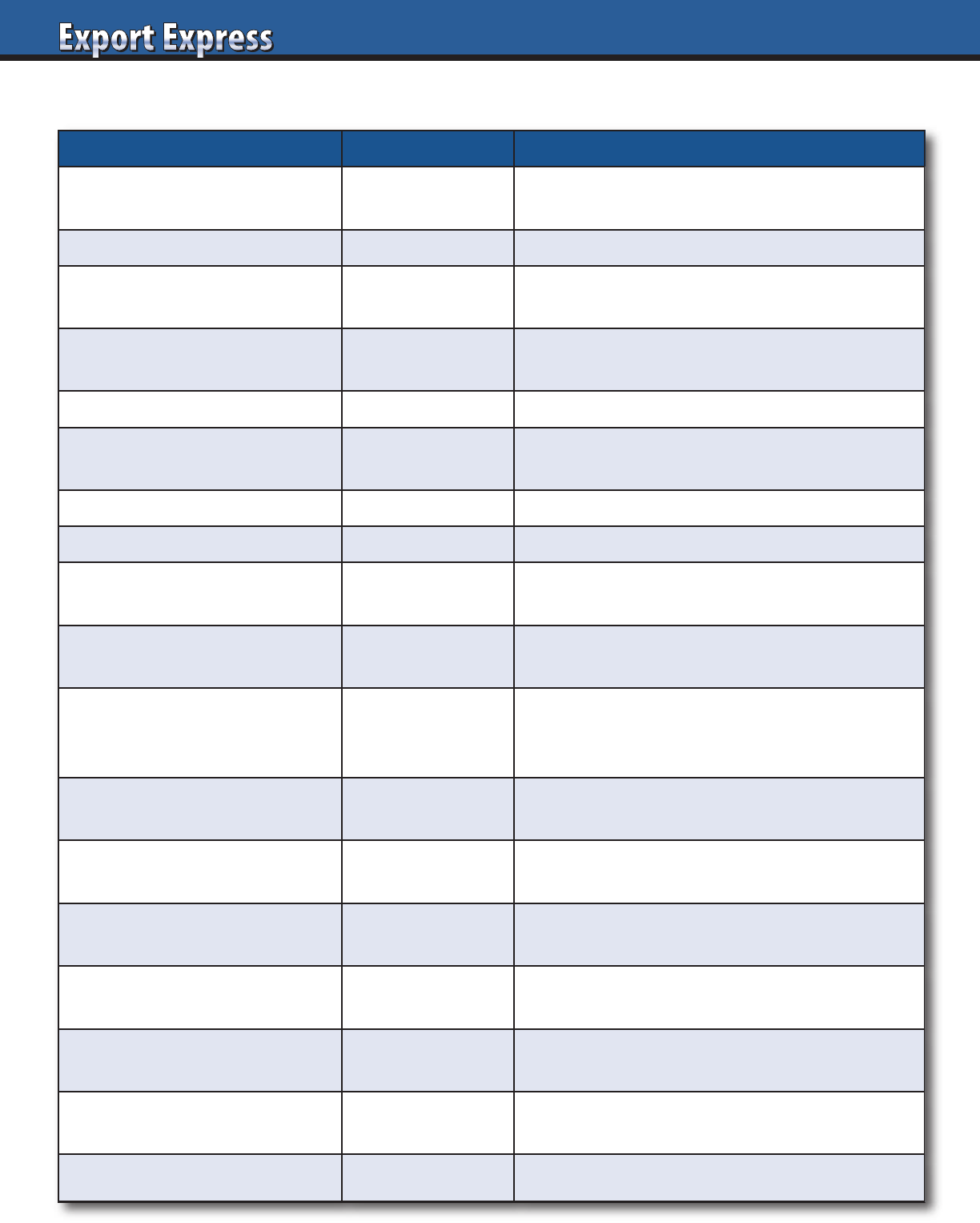
26
Price Calculation Worksheet
Item Amount Comments
List Price (factory or port)
Compare to your domestic list price?
Avoid diverting risk.
Exchange rate Watch bank rate vs. distributor rate.
Freight (sea, truck or rail)
Target full containers.
Consolidation is costly.
Duties
Apply correct Harmonized (HS) code.
Confirm Free Trade Agreements.
Customs clearance, insurance Money and time!
Inland freight: port to distributor
Translate actual costs to case rate.
Avoid flat percentage rates.
Landed Cost
Product Stickering Select countries.
Listing Fees
Flat fee. One time only.
Usually not in calculation.
Marketing fund accrual
Typically, 10-20% of list price.
Part of calculation or manufacturers price.
Distributor Margin
Normal range: 15-35%.
Depends on size, complexity of brand, services,
and “what trade spend is included.”
Other Distributor Fees
Should be part of distributor margin.
Avoid hidden profit centers.
Price to Retailer
Fair and transparent model.
Incentives for large customers, extra performance.
Retailer promotions, incentives,
rebates
10 – 20% depending on the country.
Other Retailer Fees
At times for merchandising or central distribution.
Should be allocated from distributor margin.
Retailer Margin
Global average: 28%
Range: 15% -45% based upon category, brand.
Sales Tax/VAT
Included in price in many countries.
USA sales tax is on top of shelf price.
Consumer shelf price Everyday prices and promotional prices.
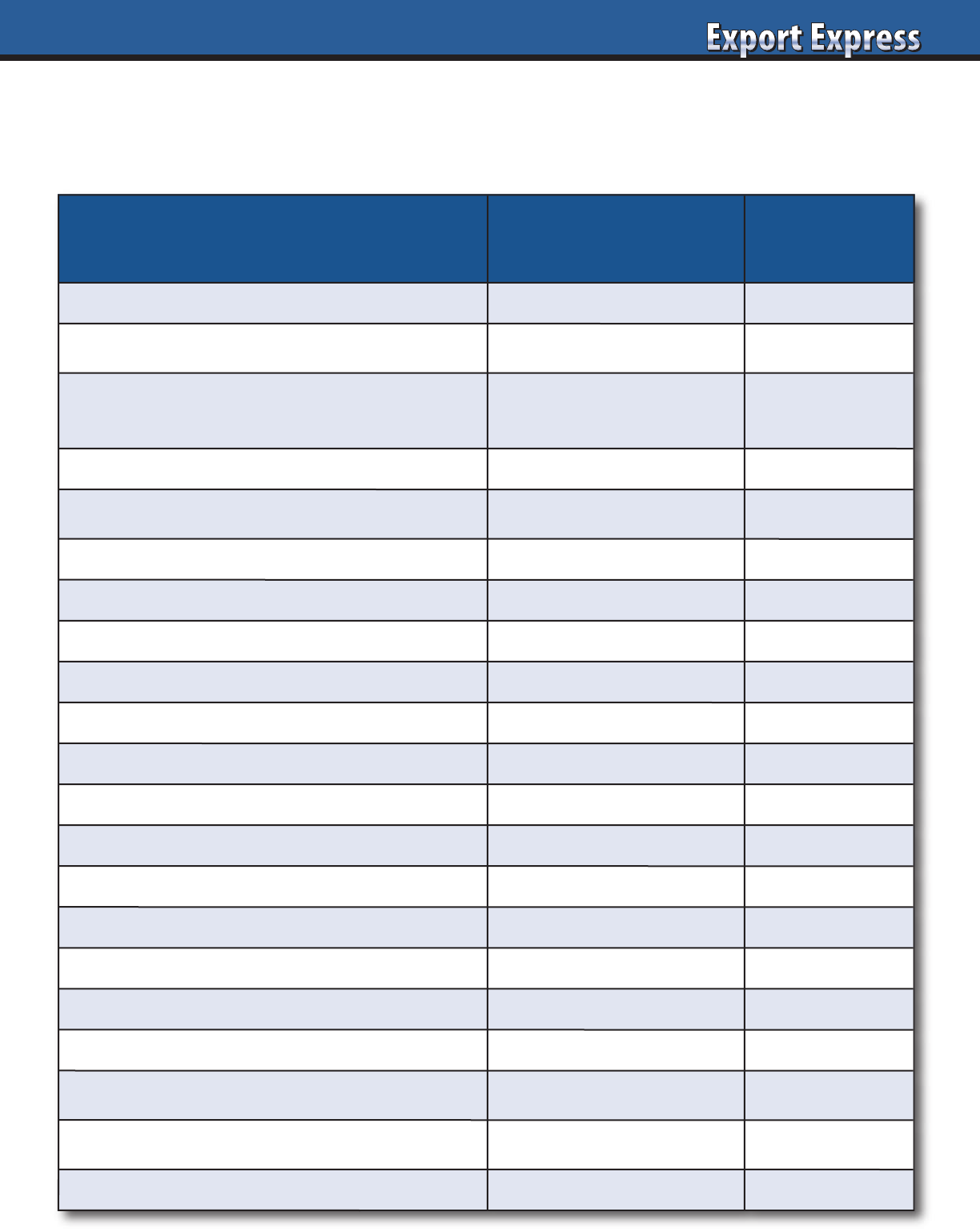
27
Cost Calculation Assessment*
*Ambient grocery example: Higher margins – Chilled and Health & Beauty products
Assessment Criteria
Global
Benchmark
Actual
Retailer: Everyday margin
20-35%
Retailer: Back margin (rebates,discounts)
0-10%
Retailer: Other margin
(Damage, merchandising, central warehouse)
0-5%
Total Retailer Gross Margin
25-40%
Trade Promotion (Manufacturer)
5-20% of net sales
Total Distributor Margin
15-35%
Warehouse/Stickering
2-4%
Delivery
2-5%
Total Distributor Logistics
3-7%
Key Account Sales
1-3%
Brand Management
1-2%
Merchandisers/Field Force
0-4%
Total Distributor Sales Team
4-6%
Administration
1-2%
Finance and Collections
2-5%
Overheads (office, IT, corporate)
2-5%
Distributor Promotion Investment
0-10%
Distributor Net Profit
2-5%
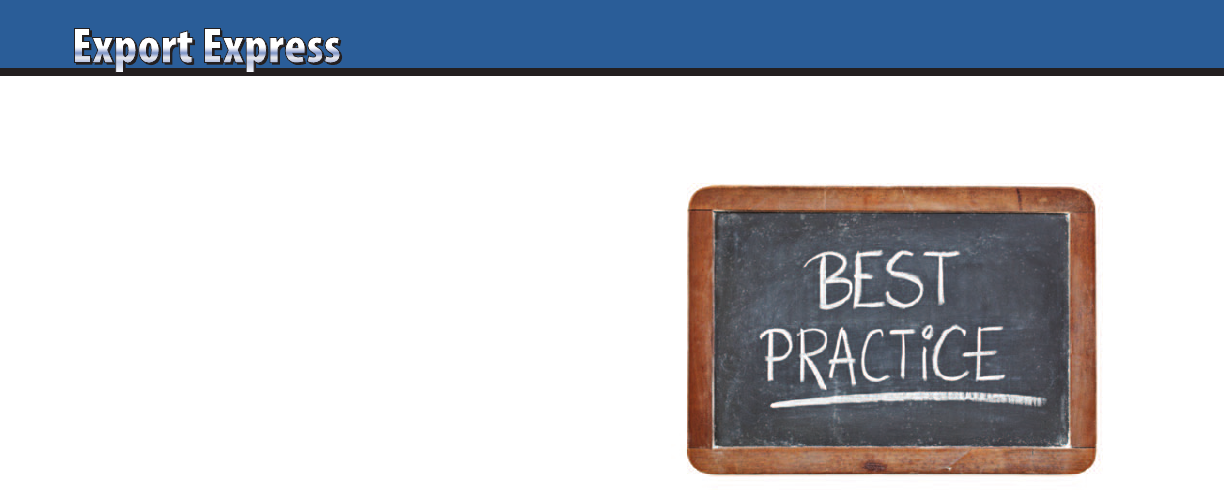
28
How much do you pay for a display or special promotion at
your top customer? Retailers from Argentina to Vietnam capture
manufacturers’ promotion money to drive sales and profits.
Brand development and market share are frequently
proportional to investment level. In the world of export, you
must “pay to play.” However, different models exist to fund
trade activities. Leading distributors confirm that they work
with a variety of different structures. “It’s all money” and the
key question remains: under which cost line do you want this
investment to sit in your price calculation?
Manufacturer Funded Promotion Budget
The classic approach is for the brand owner to develop a joint
business promotion plan with the distributor. A spending budget
is developed, funded 100% by the manufacturer. The overseas
distributor pays the local retailer and sends a billback to the
producer, with proof of performance. The rationale for this
practice is that the supplier owns the brand equity and can
change distributors. Distributors are reluctant to invest their
own margin into another companies brand.
Split Fund – “Skin in the Game”
In some cases, the brand owner and distributor split the
marketing plan costs, usually “50-50.” A further variation exists
where the brand owner covers the cost of consumer marketing
and the distributor pays for the periodic trade promotion
discounts. The philosophy is that the distributor will benefit
from higher sales and will also be motivated to execute
successful promotions if their own money is invested. This
structure appears most frequently with an existing brand,
with a minimum three year history of shipments. In reality, the
distributor calculates the expected investment and builds it into
his cost structure. A “50-50” shared model will usually not be
accepted with a new brand pioneered for the first time.
Best Price – Dead Net
Dead net pricing is the third model. In this scenario, a
manufacturer provides a distributor with his very best price.
The distributor builds in all promotional support and his margin
into his calculation. In this case, the manufacturer does not
receive a constant stream of requests for more promotion
funding. However, the brand may lose control of their pricing
model or be under supported if the distributor fails to promote
at adequate levels.
10% of Sales – $1/Case
Another common model is for a manufacturer to establish a fixed
funding rate per case sold which the distributor invests to build
the brand. Normal funding begins at 10% of case cost, but can
accelerate to 20% or more for a competitive category. Some
manufacturers offer a flat rate per case or amount per container.
As mentioned before, it ultimately converts to a pile of money
to invest in brand building. This approach functions best with
a brand with a current sales history, as percentages don’t mean
much when the brand has zero sales.
Listing Fees
These one time payments are primarily covered by the brand
owner as part of upfront launch costs. Sometimes these fees can
be rolled into introductory promotions, spread out over twelve
months, or paid via free goods. Please check out Export
Solutions’ article Ten Tips: How to Minimize Listing Fee Payments
for more ideas on how to reduce these payments.
Most Effective Promotion Vehicles
Every key account manager should know the best promotion
vehicles to drive incremental sales at their customer. At some
supermarkets, promotional leaflets drive tonnage. At others,
deep discounts (30% +) or displays are winners. Distributor sales
teams are market experts and can source best practices from their
other brands.
Post Promotion Analysis
Tools are available to measure promotion effectiveness. These
evaluate sales lift, boost in baseline consumption, and cost per
incremental case. A good idea is to analyze mutiple scenarios
such as different price points, seasonality, and display support.
Creativity Counts
Many of the best trade promotion success stories involve field
activated promotions. This allows a brand to break through
the clutter of too many “me too” events. The sales team
maintains ownership and enthusiasm to drive support. Another
positive strategy is aligning with a retailer’s favorite charity
to contribute to the community while building your brand.
Manufacturers must avoid the dull routine of repetitive
15% trade promotions. Boring!
Key Issue – Distributor Underspends
Distributors are businesses, aimed at achieving a fair profit, just
like your company. A risk occurs whenever distributors claim
responsibility for managing the trade discount plan for their
country. At times, these trade discounts can be under spent
versus category and brand requirements. For example: when a
distributor says that he will fund four promotions per year, does
that mean at a 10% level or 30% level? Will the distributor funded
promotions be for all channels and retailers or just a few
customers? How do you know?
Compliance and Audit
Most distributor contracts include provisions for audit of trade
promotion payments. Larger suppliers include trade promotion
payment software. Good practices are complex and require piles
of paperwork. A core message is that the “distributor respects
what the manufacturer inspects.”
Export Trade Promotion Funding
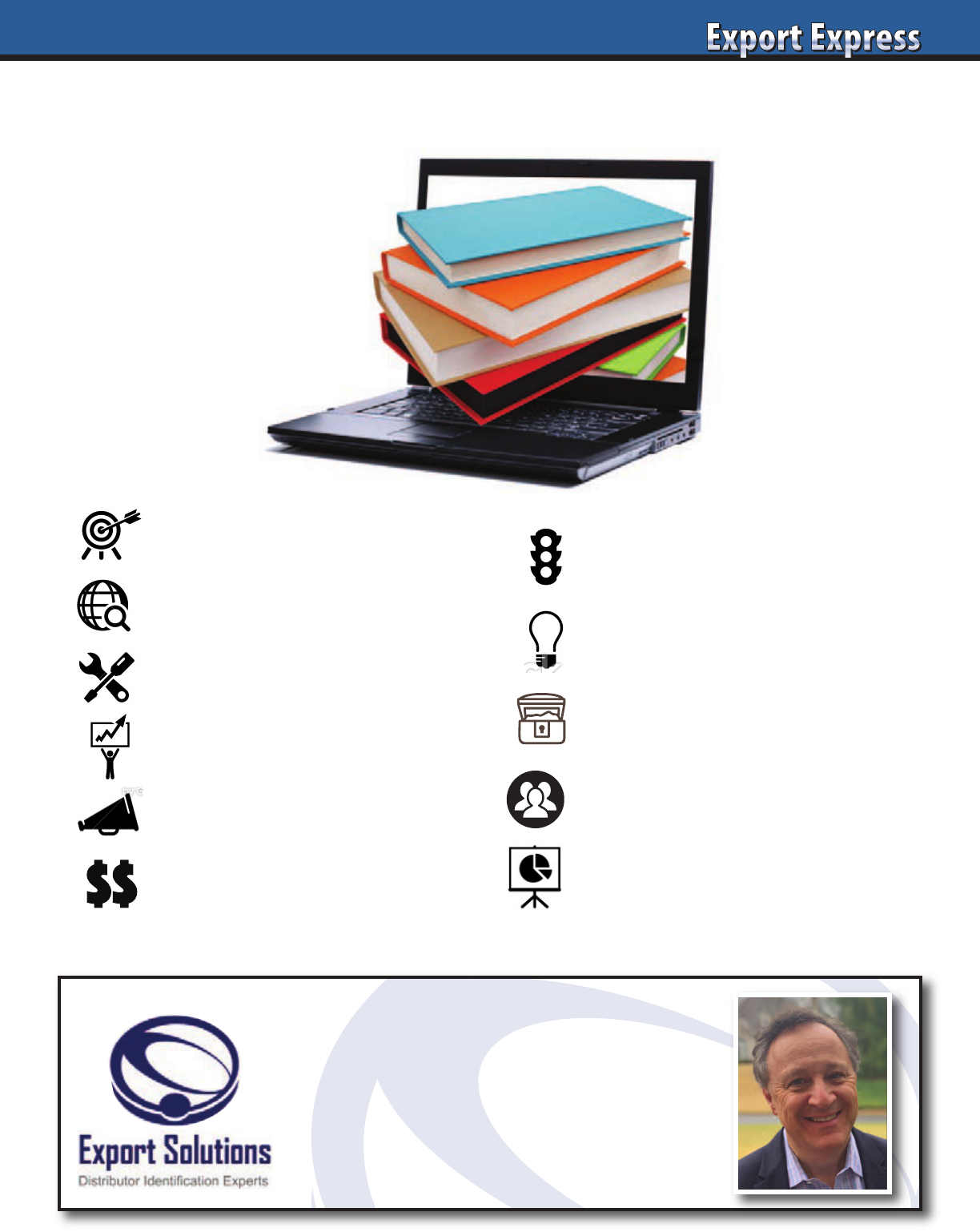
29
Create Your Own Export Library
Looking for a fresh point of view for your
next event or training workshop?
Contact Greg Seminara at
greg@exportsolutions.com
All guides available free at www.exportsolutions.com.
Export Strategy Guide
Distributor Search Guide
Export Handbook
Selling to USA Handbook
Distributor Management Guide
Finance & Logistics
300 Tips for
Export Managers
Idea Guide:
New World – New Business
Export Treasure Chest
My Favorite Templates & Forms
People Power
Strong Teams Build Great Brands
New Distributor
Cooperation Model

30
Is it time for a fresh look for the new year?
The 2020 pandemic redefined business
practices. We witnessed a global surge in
e-commerce and spent our days locked
down in our home offices on Teams
or Zoom meetings. Despite the new
dynamics, many companies remained
glued to the old marketing playbook. The
first quarter of 2022 delivers a gift of time to brandscape. Below are five
areas to consider as you refresh your export strategy and credentials.
Web Site
When was the last time that you updated your web site? Does your site maintain
a modern, inviting, look and feel? Are your products updated? Is there a page dedicated
to your international presence and export team? Add your bio and photo to create
a personal connection. Update your contact us template to make it easy for potential
distributors (or brand owners) to share their company information. Your web site is
the first place that a prospective distributor or supplier will look when evaluating
your company.
E-Commerce
E-commerce sales grew by 40% and will only become larger. However, many companies
do not fully address their e-commerce capabilities and game plans in their presentations.
Managers should evaluate each element of their business model to highlight the impact
of e-commerce. Adapt your presentations to discuss Amazon success stories, special
e-commerce packs, and digital marketing skills.
2022 Company Credentials
Distributors and brand owners regularly participate in new business “pitches.”
The typical move is to dust off the old presentation and swap logos without a proper
refresh. Consider revising your presentation to a modern 15 page deck. For suppliers,
start with a one page fact sheet, listing sales, history, employees, etc. Follow with
pages on your product portfolio, export success, and most importantly, strategy and
investment plans for the new country. Distributors should also concentrate on basic
company facts, organization chart, channel and customer coverage, and approach to
brand building.
Training
Many export managers and distributors delivered a new commitment to training
facilitated by web based platforms. It is now easy to conduct web training remotely, even
adding resources and experts from your company headquarters. Why not create a new
training module to share with your distributors? Add excitement, entertainment, and
engagement to supplement the learning. Don’t forget to send product samples, even if
the training is virtual.
LinkedIn
Brandscaping includes “brand you.” Over 800 million business people are registered on
LinkedIn and I assume that includes you. When was the last time that you updated your
photo, background, or profile? Or shared an article of interest or “liked” a post from a
colleague? LinkedIn is an important marketing tool, not just a site for job search.
Most expect another four to six months before regular business travel resumes.
This presents a perfect window to brandscape your marketing toolkit before the race
back to the airport. I followed my own advice and launched a new web site which makes
it easier for readers to access my 15 free Export Guides and more than 200 articles and
templates on export development. Please visit www.exportsolutions.com and let me
know if you like our new look.
www.exportsolutions.com
Greg Seminara
“Spend Time Selling to Distributors versus Searching for Distributors”
Brandscaping
Strategic Services
Contact Us for
Export Solutions
1. Identify Best in Class
Distributors: 96 Countries
2. Best Practices
Export Strategy
3. Distributor Management
Workshops
4. Export 101:
Let’s Get Started
5. New Market
Prioritization
and Launch Plan
6. Personal Distributor
Introductions:
96 Countries
7. Walmart International
8. Distributor Contracts,
Margins, and Fees
9. Meeting Speaker
10. International
Strategy Expert
Strategic Services
Contact Us for
Export Solutions
1. Identify Best in Class
Distributors: 96 Countries
2. Best Practices
Export Strategy
3. Distributor Management
Workshops
4. Export 101:
Let’s Get Started
5. New Market
Prioritization
and Launch Plan
6. Personal Distributor
Introductions:
96 Countries
7. Walmart International
8. Distributor Contracts,
Margins, and Fees
9. Meeting Speaker
10. International
Strategy Expert
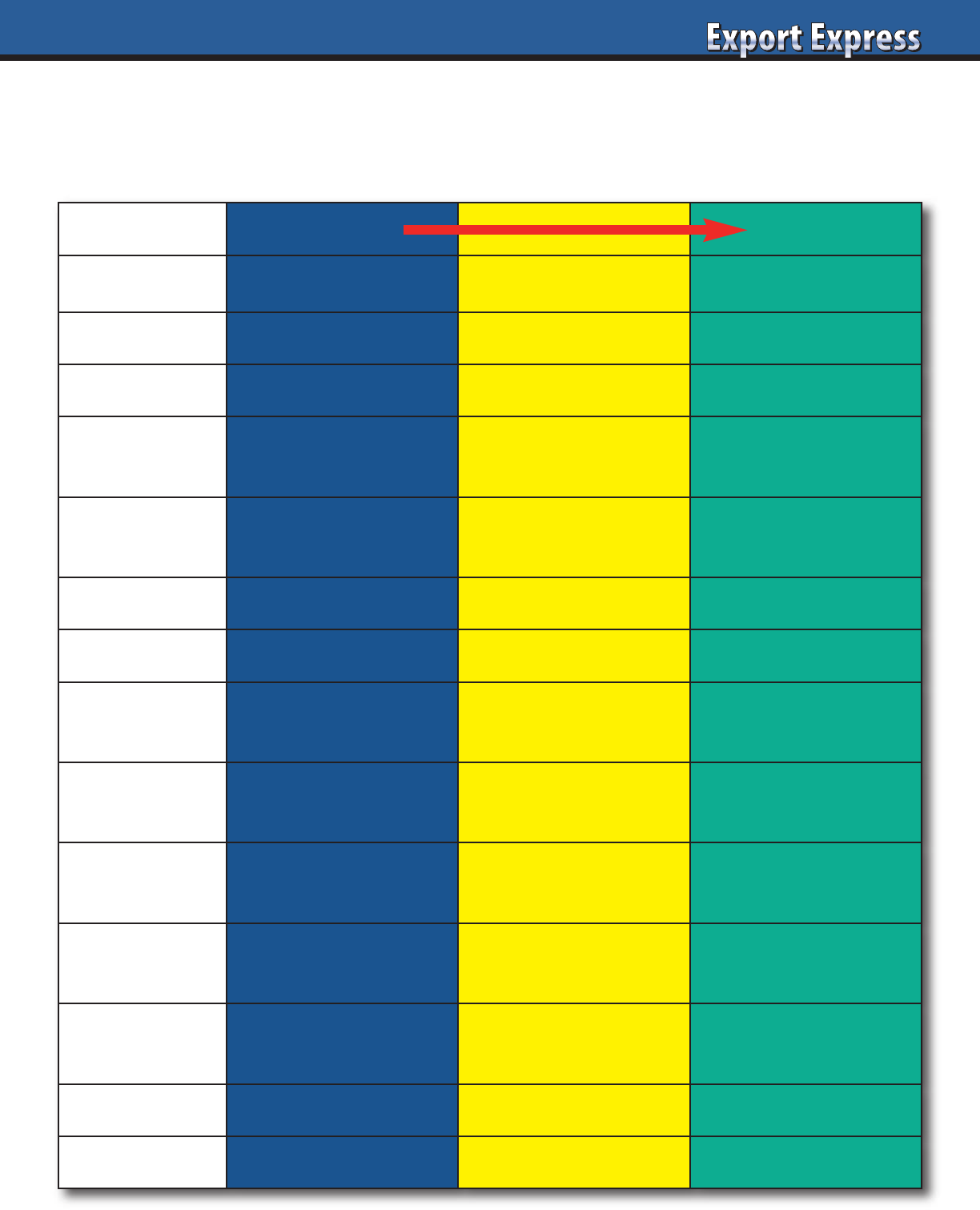
31
A big difference exists in export strategy for SMCG (Slow Moving Consumer Goods) and companies committed
to FMCG Brand Building (Fast Moving Consumer Goods). Either model is okay. Many companies are en route
between SMCG and FMCG. Alignment between aspiration, investment, and perspiration drives realistic outcomes.
Export Journey: SMCG to FMCG
SMCG FMCG
Aspirations Niche Participant Mass/Leader
Consumer
Homesick Upscale Local
Research
None Nielsen Consumer
Portfolio
Best sellers from
home market
Best sellers from
home market
Tailored to region
or country
Packaging
Standard packs stickered Multilingual
Local language label
and pack size
Factory
Corporate HQ Corporate HQ Offshore
Pricing
Super Premium Premium Competitive
Marketing
None Sampling, Digital
360 Plans
TV, Digital
Trade Spend
None 10-20% Discount
Ad, Display
20-30% Discount
Route to Market
Niche distributor Mid -size distributor
Mass distributor or
subsidiary
Country Focus
Adjacent
Homesick Expats
Mid-size countries
plus USA
All countries
USA, China, Brasil
Channels
E-Commerce
Homesick Expats
Supermarket
E-Commerce
All channels
Oversight
1 visit/year from HQ Regional manager Dedicated country manager
Complexity
Low Moderate High
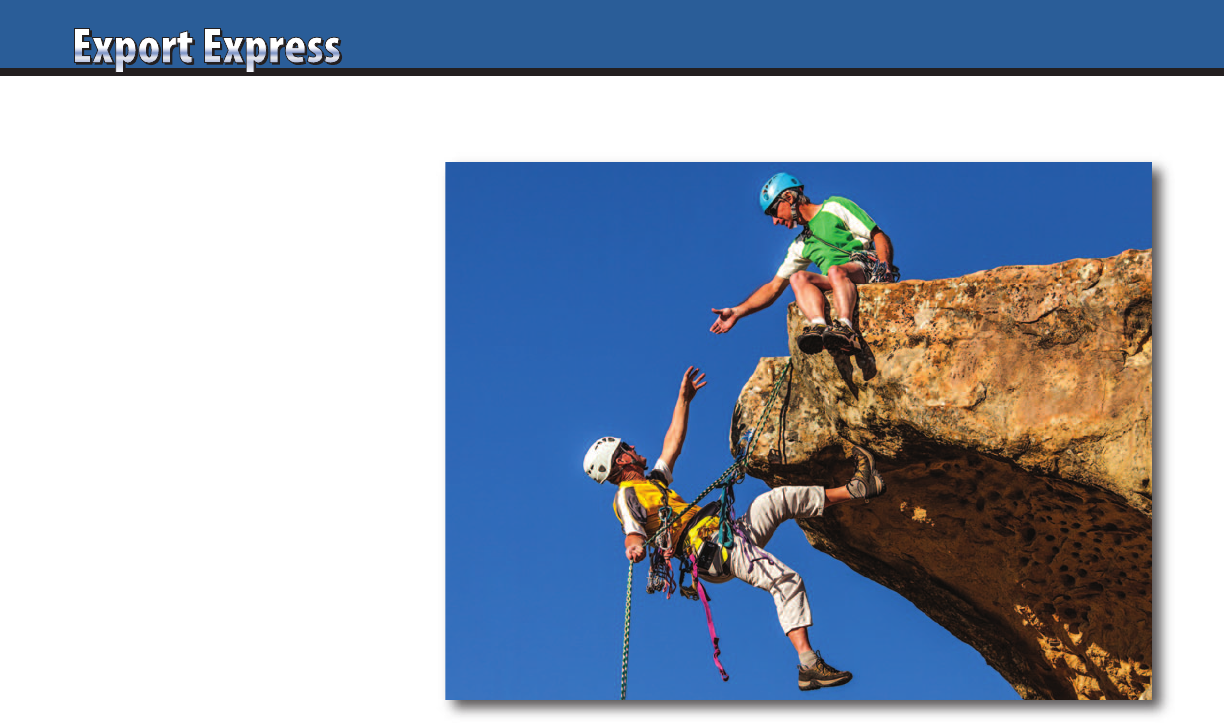
32
Brand owners express frustration at the
lack of response from distributors to
their representation inquiries. Qualified
distributors are flooded with emails from
companies looking for new distributors
to handle their unknown brands. It’s
difficult to convince massive retailers
to take a chance on a new brand without
a proven track record. It’s even tougher
to persuade the owner of a mid-size
distributor to write a check for the first
order of your product, particularly if
you are not committed to a significant
marketing campaign. Brand building
from ground zero requires one-two years.
Research reveals that approximately 20
percent of new products are still on the
shelves two years later. Listed below are
Export Solutions’ tips on increasing your
chances that your new brand will be a
“Gold Mine” for a successful distributor.
Distributors: Always Looking for New Brands
Every distributor is looking for new
brands. Distributor profitability rises
exponentially when they add new
business. New business allows them
to leverage their fixed costs of warehouse
space and sales teams. Most distributors
search for adjacent brands that
complement their existing portfolio.
For example, confectionery specialists
look for other snack items that may be
purchased by the same buyer and are
located in the same aisle as their current
brands. Distributors need new
companies, as all distributors (even
the good ones), lose brands due to
acquisition, performance, or direct
models. The key is to position your
new brand opportunity as an attractive
addition to the distributor’s portfolio.
What Every Distributor Wants to Know
While you rave about your brands
superior taste, the distributor has
three thoughts on his mind :
1. How much money can he make
representing your brand?
2. Will it be tough to secure
market acceptance?
3. What will the brand owner commit
to in marketing investment?
Manufacturers that position their
proposition in these terms have a better
chance of gaining market acceptance.
Review Export Solutions’ article “How
to Excite Buyers, New Product Checklist”
for an independent product assessment.
Resistance to Pioneering
New product launch cycles require up
to one year from time of first distributor
meeting until he receives retailer payment
for his first order. During this incubation
period, the distributor must allocate his
sales and marketing resources to your
company without compensation. This
time dedicated to your company is
sourced from their other brands that are
currently generating income. Access to
the shelf does not guarantee consumer
trial and repeat purchase. A distributor
may buy your brand, capture shelf space,
and suffer disappointment when the
product does not sell. Unfortunately,
these pessimistic comments reflect reality
and provide insights on why best in class
distributors are hesitant to pioneer.
On the Road to Gold Mine
How can brand owners overcome
distributor resistance to pioneering?
Distributors are impressed by large
companies and brands that have been
successful in adjacent countries. Some
distributors will accept a product that
offers some existing market penetration
with the belief that their stronger team
can drive the business to the next level.
Manufacturer commitment to a powerful
marketing program sends a loud message
that you are serious. For mid-size
manufacturers, offering a small monthly
pioneering fee ($3,000 - $7,000)
demonstrates that you are a patient
partner, willing to co-fund the launch
preparation until distributor sales begin.
At the end of the day, distributors look for
a strong partner, with a good track record,
and a firm financial commitment to
support youir mutual marketing efforts.
How to Find an Enthusiastic Partner?
Export Solutions compiled an extensive
Distributor Search guide covering all
aspects of the distributor search process.
In pioneering scenarios, it is critical to
consider a wide variety of potential
partners. Schedule a one week trip to a
country. Plan to visit at least 5
distributors. Most distributors will be
open to an introductory meeting with an
overseas principal if you are professional
in your approach. Referrals from your
local government trade support contact
or another one of their current brand
owners helps pave the way. Trade shows
also generate leads from interested
distributors. Post a large sign saying:
Distributors Wanted, listing countries
of interest. This will encourage visitors
to stop and chat.
Pioneering is tough but not impossible.
In reality, creating new brand sales from
a zero base is the essence of the Export
Manager’s job responsibility. Fortunately,
Export Solutions’ database covers more
than 9,200 distributors looking for
opportunities. Good luck!
Pioneering: A Gamble, Not a Guaranteed Gold Mine

33
Your new product launch is a big deal, comparable to the birth of
a child. The first days are critical if you want to raise a “healthy
brand.” Listed below are Export Solutions’ ten tips for launching
your company for the first time to a new distributor or
expanding through a new product introduction.
Firm Calendar
Distributor and brand owner should align on a “firm calendar.”
This includes dates for sales materials development, launch
meeting and key account calls. All dates are dependent on arrival
and customs clearance of the first order. No product, no meeting!
Get Ready
Allow adequate time for printing of point of sale materials
and development of key account presentation. In some cases,
translation or local adaptation of brand owner supplied tools
may be required.
Memorable Meetings
I still remember motivational meetings with themes around
boxing and magic. Create new memories with a special theme or
an external speaker. Off-site meetings contribute to making your
launch special, with an added sense of commitment. Have fun!
Mandatory Attendance
The distributor CEO, brand manager, and export manager must
all attend and have speaking roles. Best is to have one meeting
with sales and merchandising teams together. However, in some
cases, a follow up meeting may be required. Invite logistics,
finance, and customer service people to make it a “team effort.”
In-Store Objectives
Establish clear measures for in-store presence. This includes
shelf positioning, space allocation, pricing, and off-shelf
merchandising. Share a photo. What qualifies as a “good store”
versus a “bad store?”
Frequently Asked Questions
Prepare a list of potential questions and logical responses.
Role play with the team. Share a printed one pager with
sample answers to tough questions.
Samples, Samples, Samples
Provide generous quantities of samples for all distributor
employees to enjoy and take home. Prepare recipes if your
brand is a food product. Samples are your best advertisement.
Personal Goals
Each team member should have personal goals for your launch.
For a key account sales person, this could be acceptance of the
core product lineup. A retail merchandiser could be assigned
a target of a specific number of stores with displays or eye level
shelf placement. For the launch, focus on implementation goals
versus case shipments.
Key Account Calls
In many countries, large supermarket chains dominate sales.
Develop a personal strategy for each key account. What are
the buyers internal goals? How do we fit with the chains
consumer base and plans? Which chain “push” programs can
we participate in? Schedule a “lead call” with an easier key
account to get feedback that will help you with a tougher buyer.
Invite the export manager or distributor MD to participate in the
sales call if it will help.
Audit
Schedule a retail audit of stores to coincide with the expected
retail availability of product. Bring other people from the brand
owner’s company and have 2-3 teams auditing the market
against a specific set of goals. Visit secondary cities, not just the
stores around the distributor’s office. Recognize that conditions
will not be perfect and celebrate progress to date.
New Product Launch: Ready, Set, Grow – Ten Tips
Need more information? Visit www.exportsolutions.com.
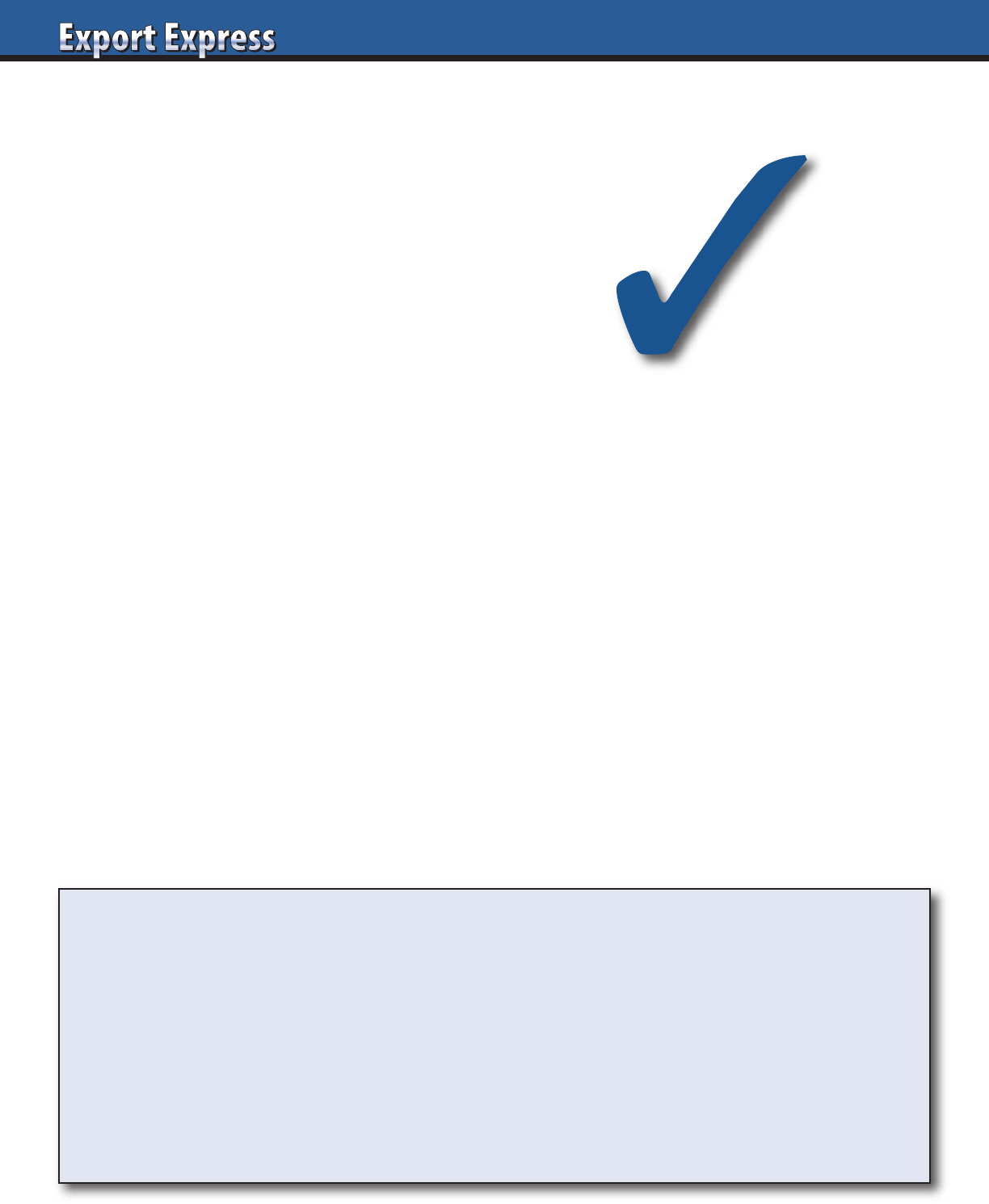
34
Export Solutions’ New Distributor Checklist
____ Contract/Agreement
____ Price Calculation Model
____ Business Plan: objectives, marketing,
spending, key dates
____ Category Review: Pricing, Shelf,
Assortment, Merchandising
____ Label Compliance
____ Shelf Life
____ Order Lead Time
____ Minimum Order
____ Pick up Point
____ Payment Terms
____ Payment Currency
____ Damage Policy
____ Product Registration
____ Forecast: Year 1
____ Pipeline Order & Inventory
____ Brand Facts
____ Product Samples
____ Appointment Letter
____ Brand Specifications in System:
Distributor & Customers
____ Training: Key Account Managers,
Retail, Administrative Staff, Warehouse
____ In Store Standards: Pricing, Shelf
Management, Merchandising
____ FAQ’s/Handling Common Objections
____ Key Account Presentation
____ Customer Appointment Dates
____ Category/Business Review:
Tailored to Each Key Account
____ Retail Sales Contest
____ Checkpoint Calls
____ Market Audit Date
____ Reporting: Track Distribution, Pricing,
Shelf Positioning, Merchandising, etc.
3 History of Success pioneering other international brands
3 Strong retail presence for current brands handled
3 Logical launch plan, category analysis, and cost structure
3 Positive references from existing brands and Dun & Bradstreet
3 Enthusiastic about your brand and the business
Greg's Guidance: Distributor Assessment Criteria
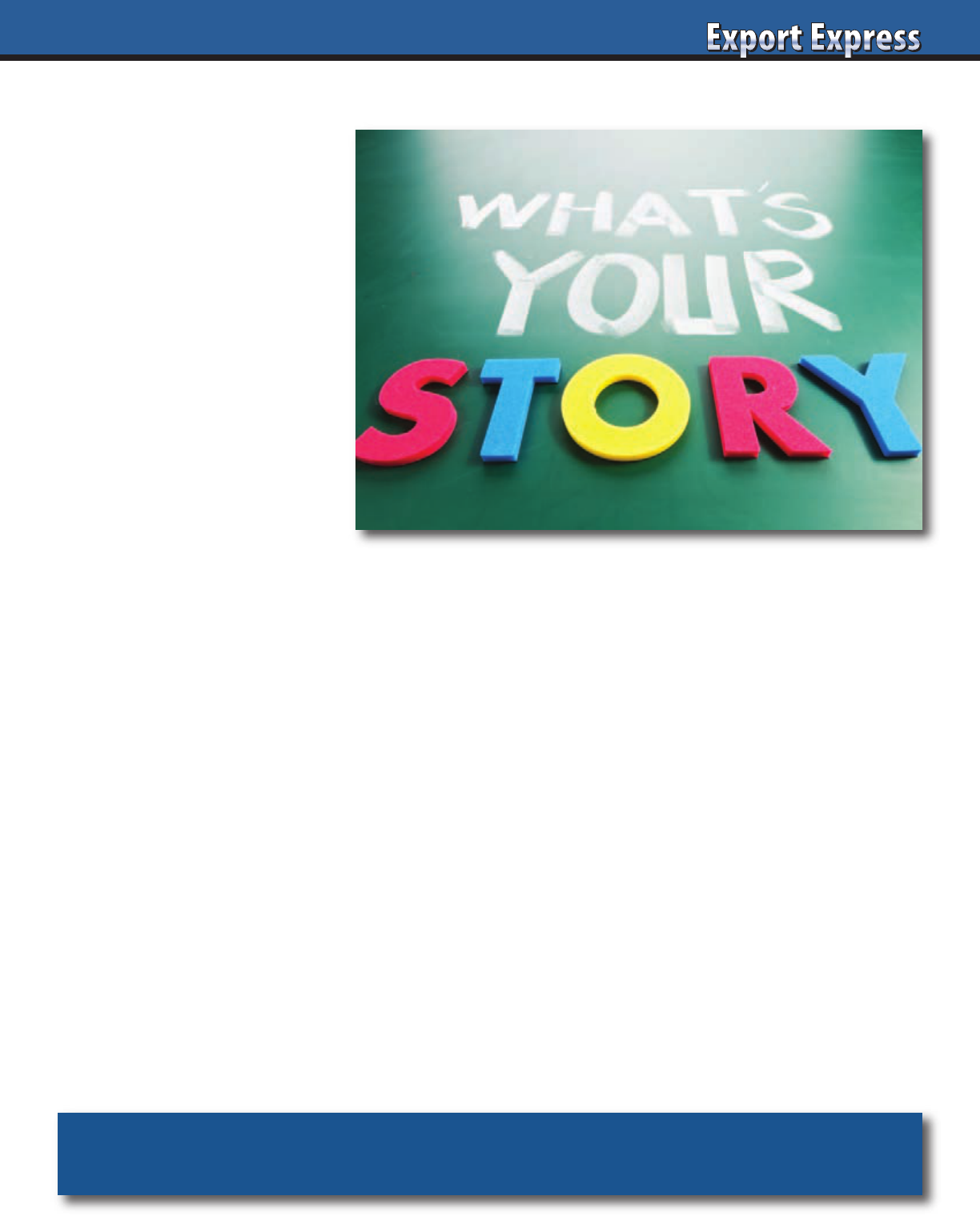
35
Distributors are flooded with requests
for representation of brands from
around the world. Normally, these
presentations are jammed with pretty
photos and long stories about the
company’s history. Brands will receive
better response with a fact based,
company credentials presentation
focused on “what distributors and
buyers really want to know.” Export
Solutions recommends that brands
create two versions of your credentials
presentation: a ten page detailed
presentation and a one page summary.
Recapped below are our ten tips
on developing a strong company
credentials presentation to attract
interest from distributors and
buyers anywhere.
1. Just the Facts:
Page 1 should include basic company
facts. Annual sales, ownership, number
of employees, and key categories
and brands.
2. History
Tell the story of when and how the
company was founded. This is your
chance to seduce the audience with a
captivating story. Learn to tell the story
in one page with no company videos
or DVDs (boring!). Provide a longer
version of your history and milestones
on your company web site for those
who want more information.
3. Brand USP
This is the place for pretty pictures
of your brand and the opportunity to
demonstrate your category expertise.
Why is your brand different? How do
you compare with current category
assortment? List any awards or
recognition for your company.
4. Current Export Markets
Share countries where your brand is
currently available. Segment between
core markets where your brand is
strong and others where you maintain
niche status. What is the rationale for
entering the distributor’s country?
5. Distributor and Retailer Partners
Highlight well known distributors
currently serving as your partners. List
retailers who currently sell your brand.
Logos work well.
6. Success Stories
Focus on recent examples of your brand
building results. Mention specific retailers
or distributors if examples are well
known retailers or in adjacent countries.
7. Investment Strategy
Distributors and buyers demand critical
information on how you plan to generate
consumer awareness, trial, and repeat
purchase of your product. Their
interest will match your level of
financial commitment.
8. Team Resources
Publish photos of your export team.
This includes marketing, finance,
customer service, and logistics experts.
List years of service for each team
member to demonstrate that you have
a strong support organization to build
the business.
9. Sync With Web Site
Your credentials presentation should sync
with information on your web site. In
reality, your web site is the first place that
a potential distributor will visit. Modern
web sites, with crisp graphics, minimal
text, and no music will receive attention.
Do you have a page dedicated to
international export? When was the last
time you updated your web site?
10. Why is your Company a Good Partner?
This represents a one page summary of
your company credentials. What value
does your company bring to the
partnership? What is the “size of the
prize?” How will your brand make more
money for the distributor or buyer?
Export Solutions can help!
Export Solutions has participated in more
than 300 distributor identification projects
and reviewed web sites of more than
10,000 distributors and brand owners.
We are available to review your company
presentation or web site to provide timely
ideas and suggestions to improve your
visibility. Contact us in the USA at
(001)-404-255-8387 for more information.
Ten Tips: Your Company Credentials Presentation
Need more information? Visit www.exportsolutions.com.
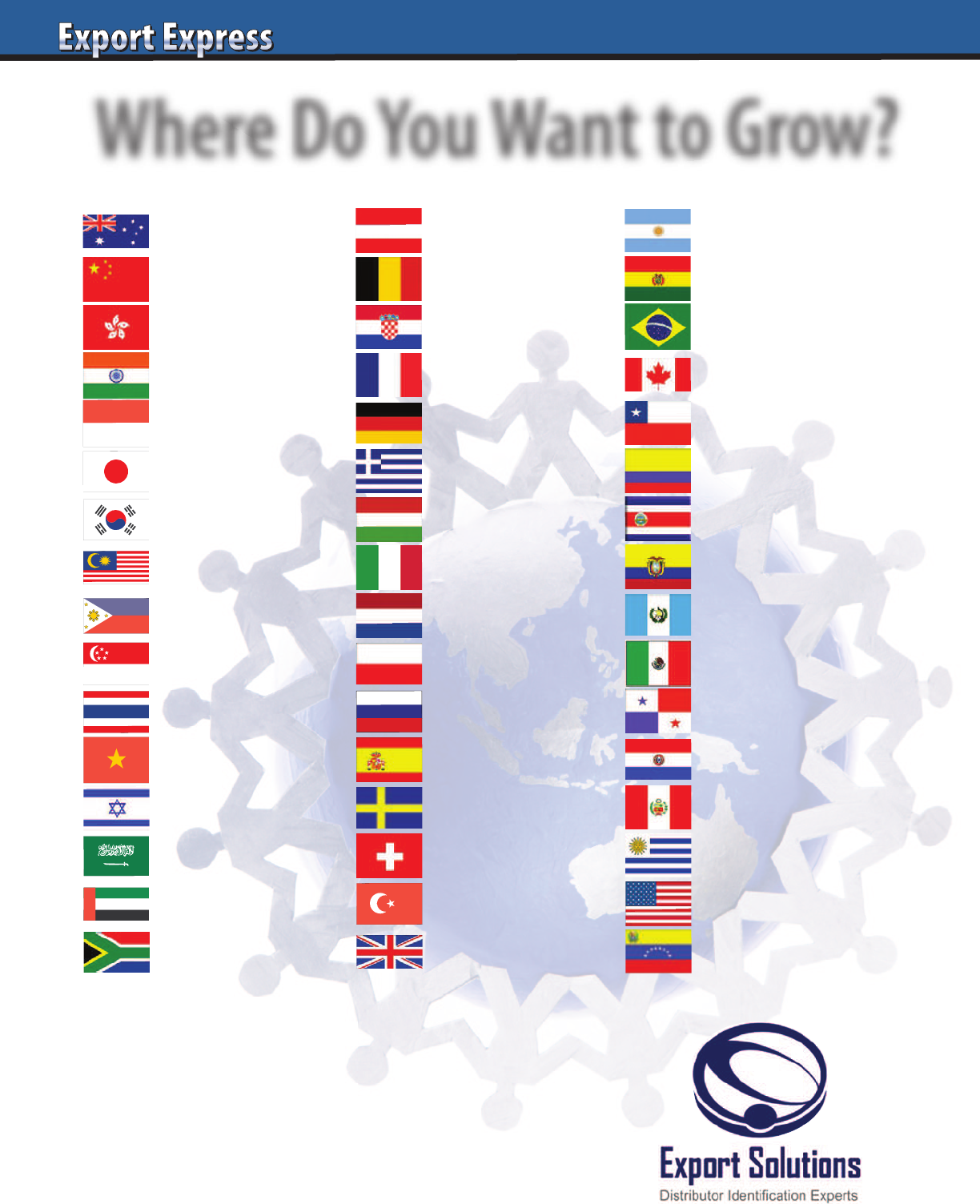
36
Where Do You Want to Grow?
Asia/Africa/Middle East
Europe Americas
Use Export Solutions Database
to fill in the Gaps in your
Export Coverage Map
Australia – 274 Distributors
China – 160 Distributors
Hong Kong – 177 Distributors
India – 109 Distributors
Indonesia – 78 Distributors
Japan – 176 Distributors
Korea – 146 Distributors
Malaysia – 128 Distributors
Philippines – 109 Distributors
Singapore – 163 Distributors
Thailand – 94 Distributors
Vietnam – 49 Distributors
Israel – 61 Distributors
Saudi Arabia – 115 Distributors
U.A.E. – 195 Distributors
South Africa – 106 Distributors
Plus 14 more countries
Austria – 68 Distributors
Belgium – 85 Distributors
Croatia – 78 Distributors
France – 125 Distributors
Germany – 188 Distributors
Greece – 90 Distributors
Hungary – 68 Distributors
Italy – 105 Distributors
Netherlands – 155 Distributors
Poland – 90 Distributors
Russia – 108 Distributors
Spain – 157 Distributors
Sweden – 103 Distributors
Switzerland – 100 Distributors
Turkey – 82 Distributors
U.K. – 274 Distributors
Plus 19 more countries
Argentina – 61 Distributors
Bolivia – 52 Distributors
Brazil – 135 Distributors
Canada – 205 Distributors
Chile – 92 Distributors
Colombia – 82 Distributors
Costa Rica – 73 Distributors
Ecuador – 55 Distributors
Guatemala – 61 Distributors
Mexico – 193 Distributors
Panama – 63 Distributors
Paraguay – 57 Distributors
Peru – 82 Distributors
Uruguay – 52 Distributors
USA – 598 Distributors
Venezuela – 38 Distributors
Plus 14 more countries

